Freidel publications
…
308 pages
1 file

Sign up for access to the world's latest research
AI-generated Abstract
This volume summarizes archaeological investigations at Yaxuná conducted from 1986 to 1996, detailing survey data, excavations, artifact analyses, and interpretations. It highlights the completion of seven doctoral theses stemming from the Selz Foundation project, with a focus on the stratigraphy and faunal remains analyzed from the site. The report also includes discussions on zooarchaeological findings, emphasizing the diversity and dietary practices of the ancient Maya and their interactions with local fauna.
Figures (403)













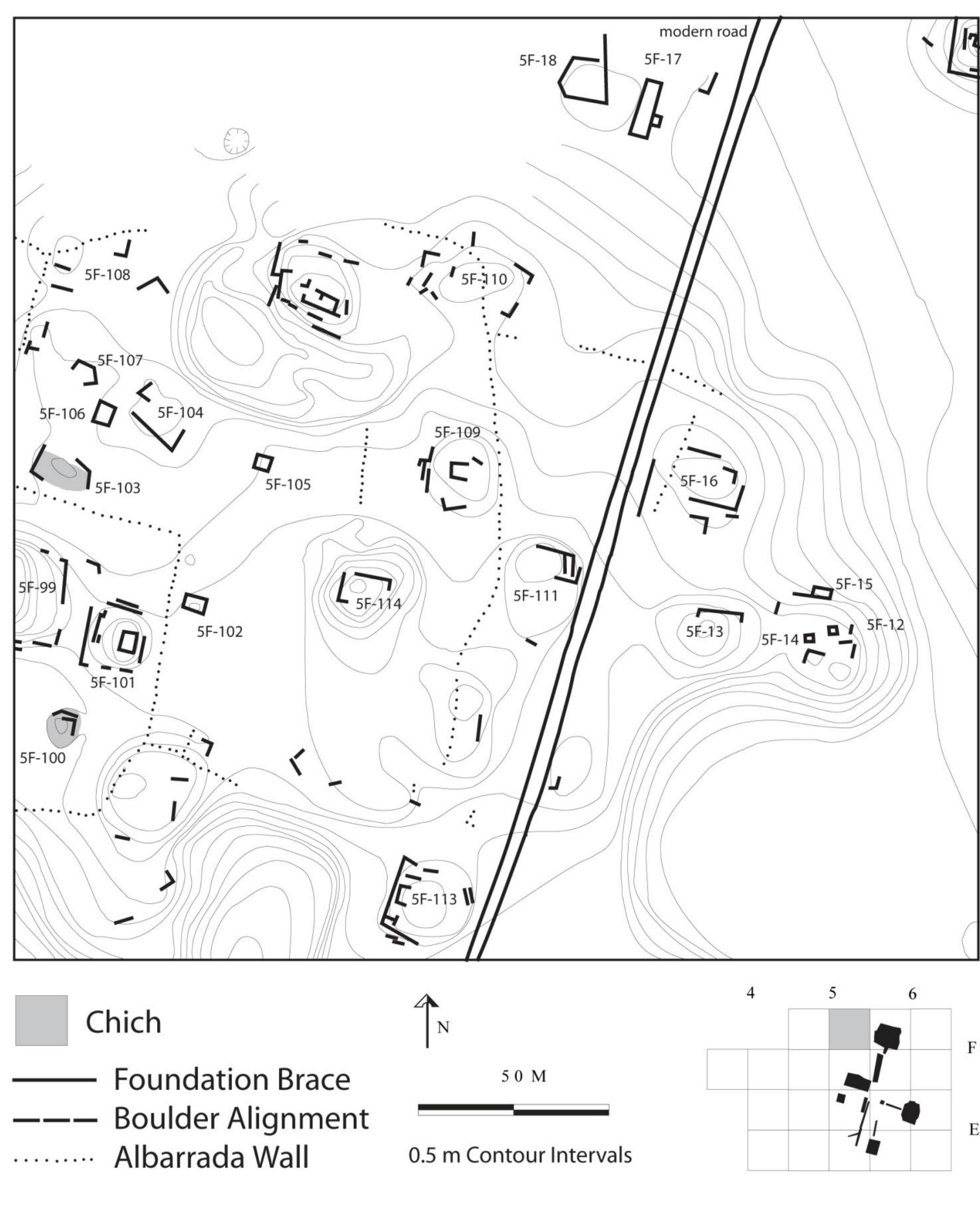























































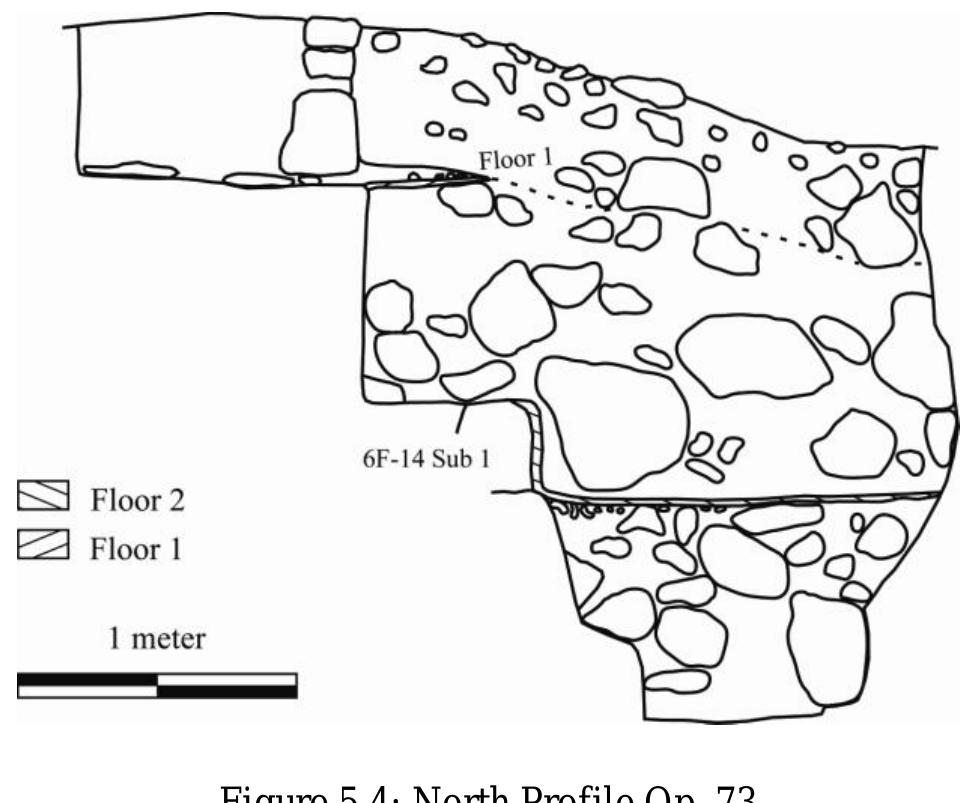






















































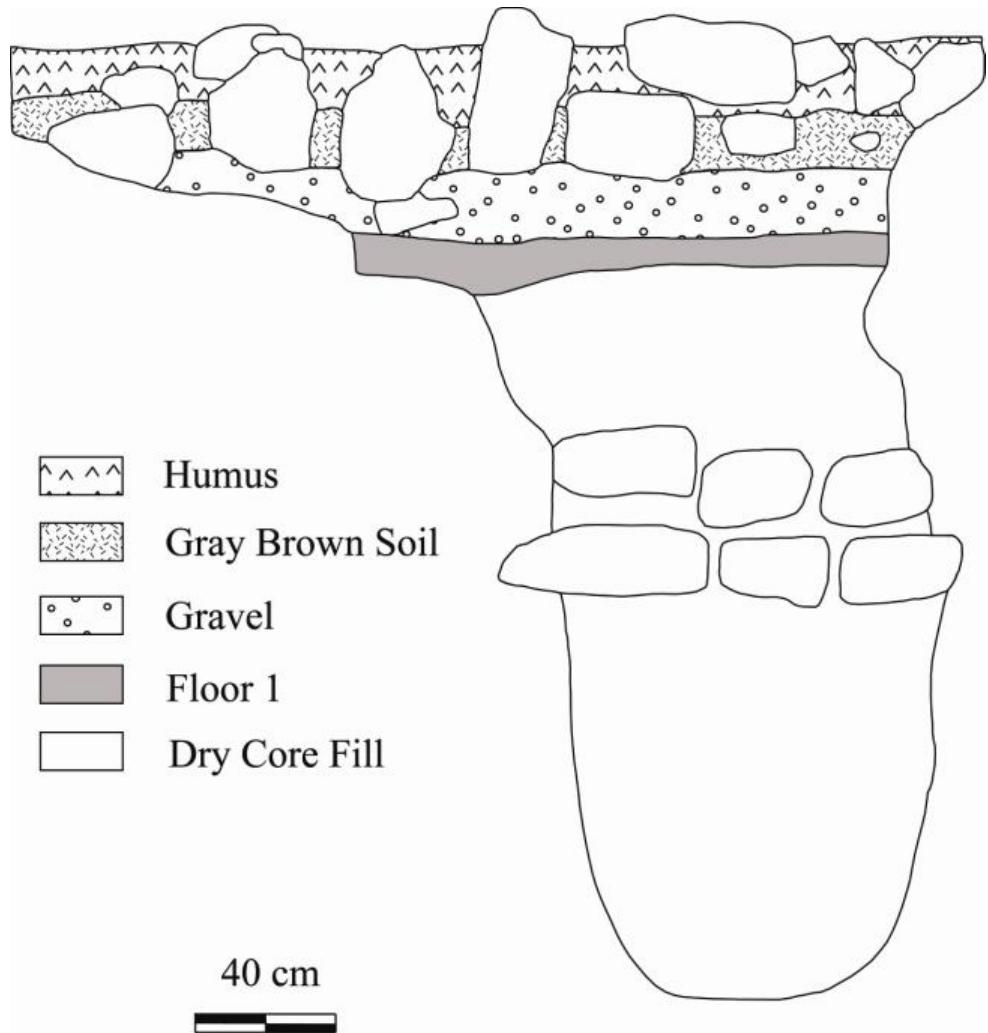


































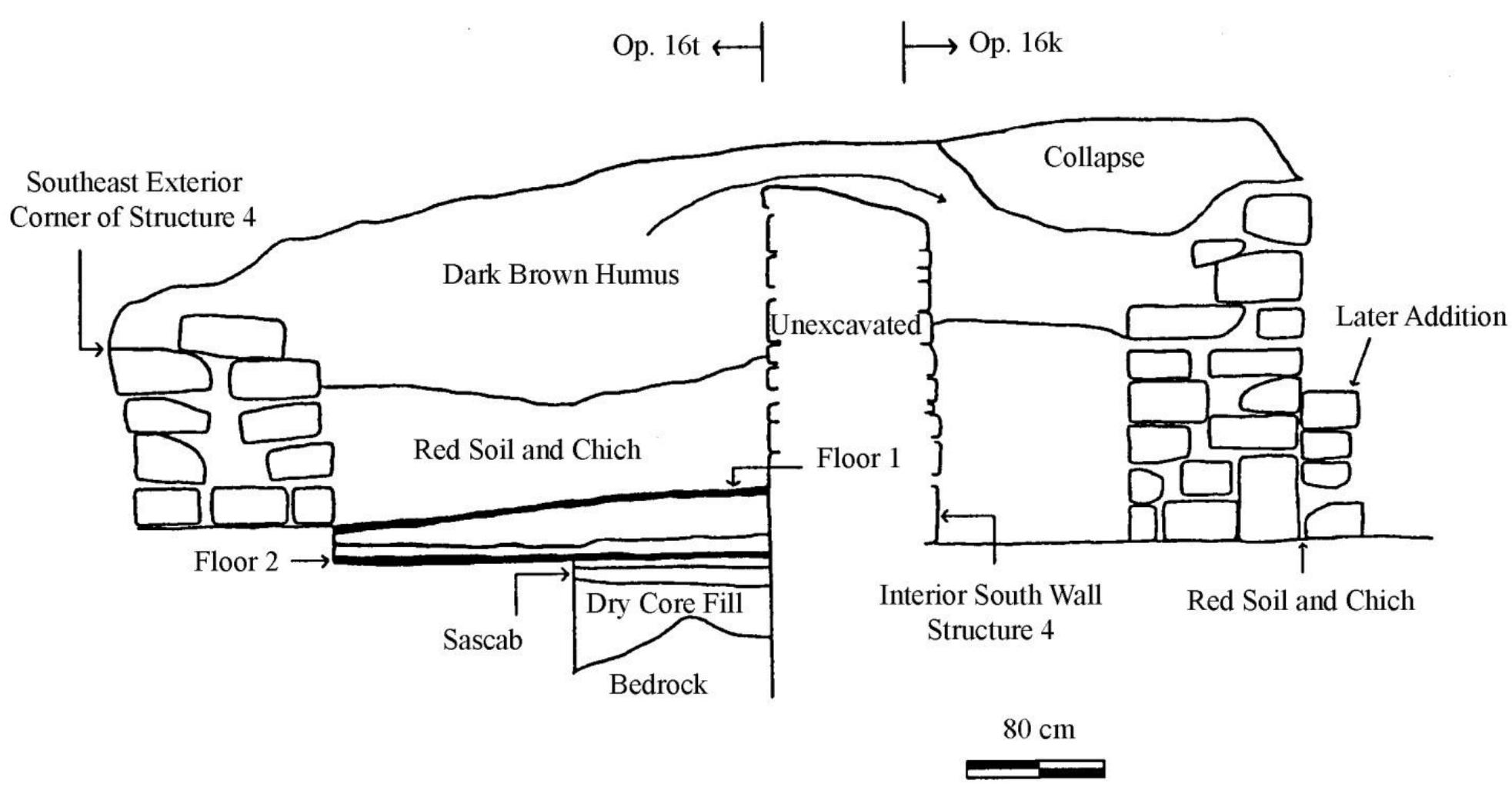









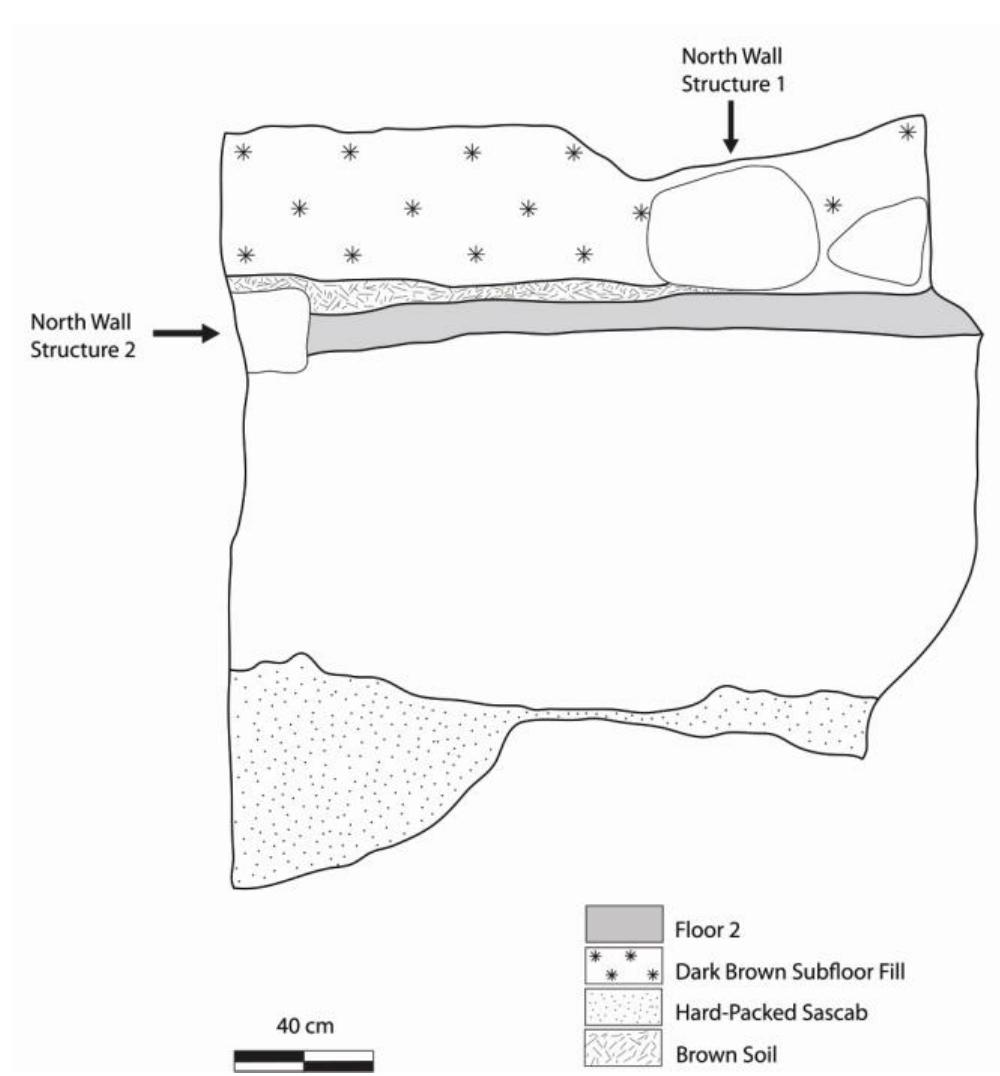













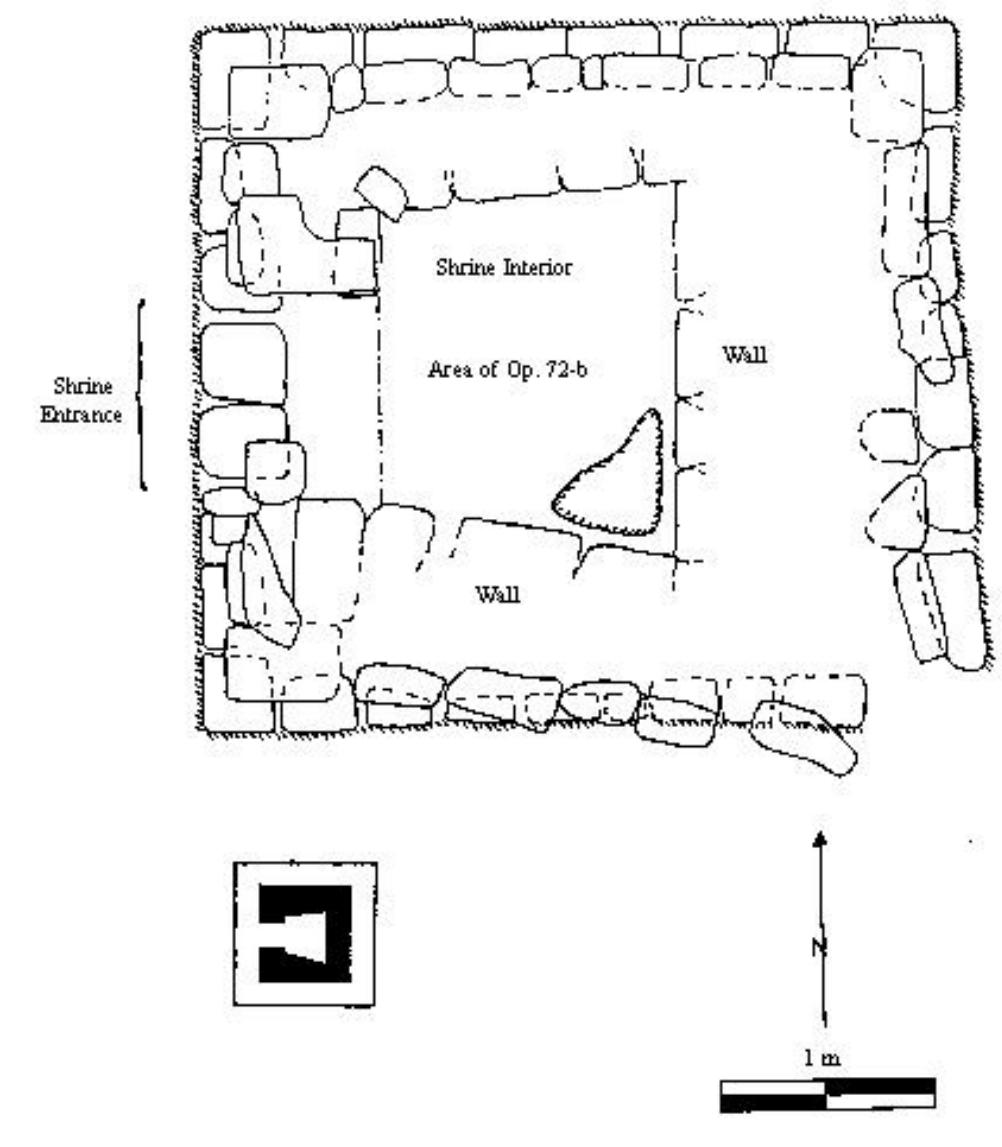








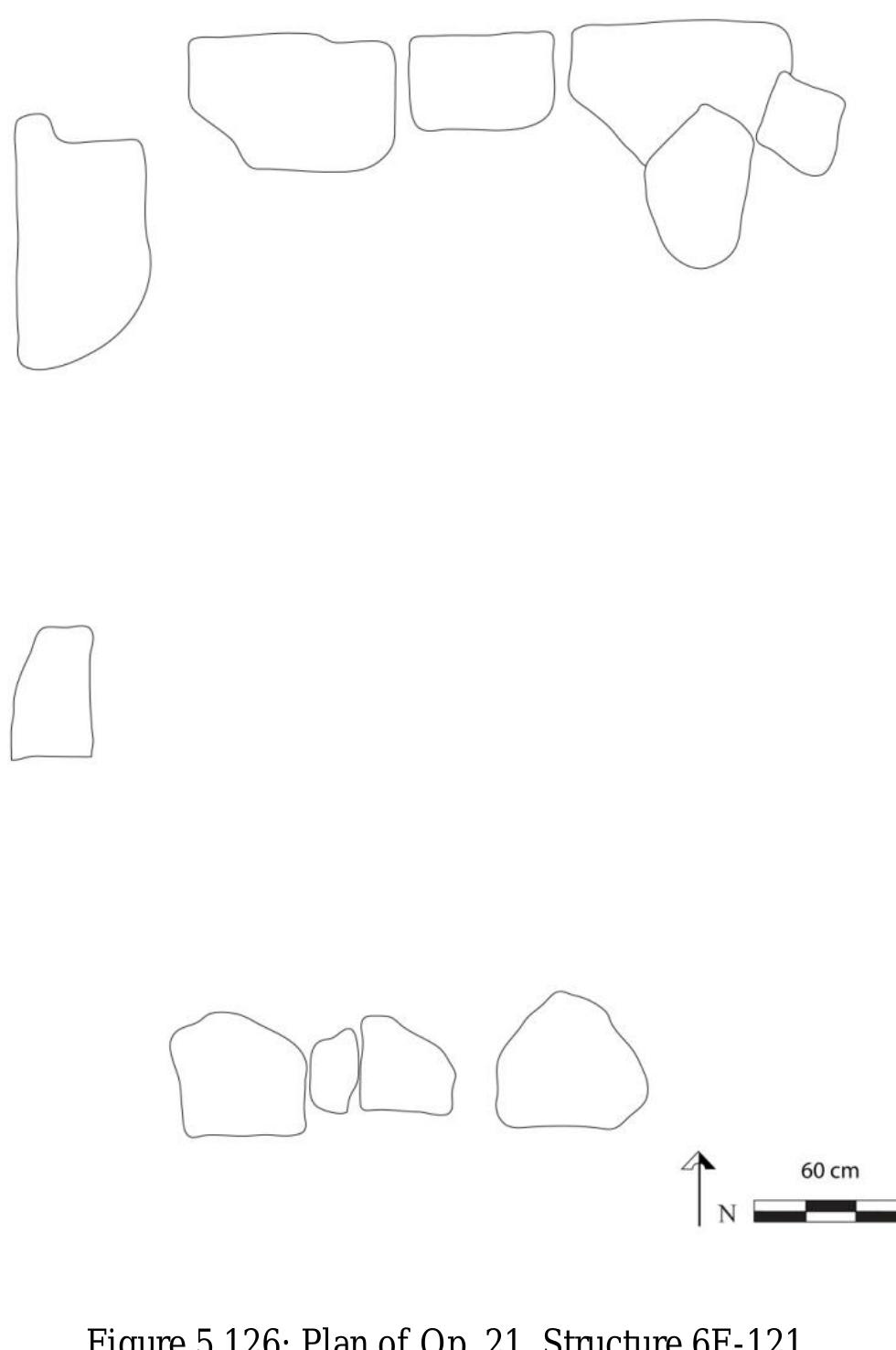













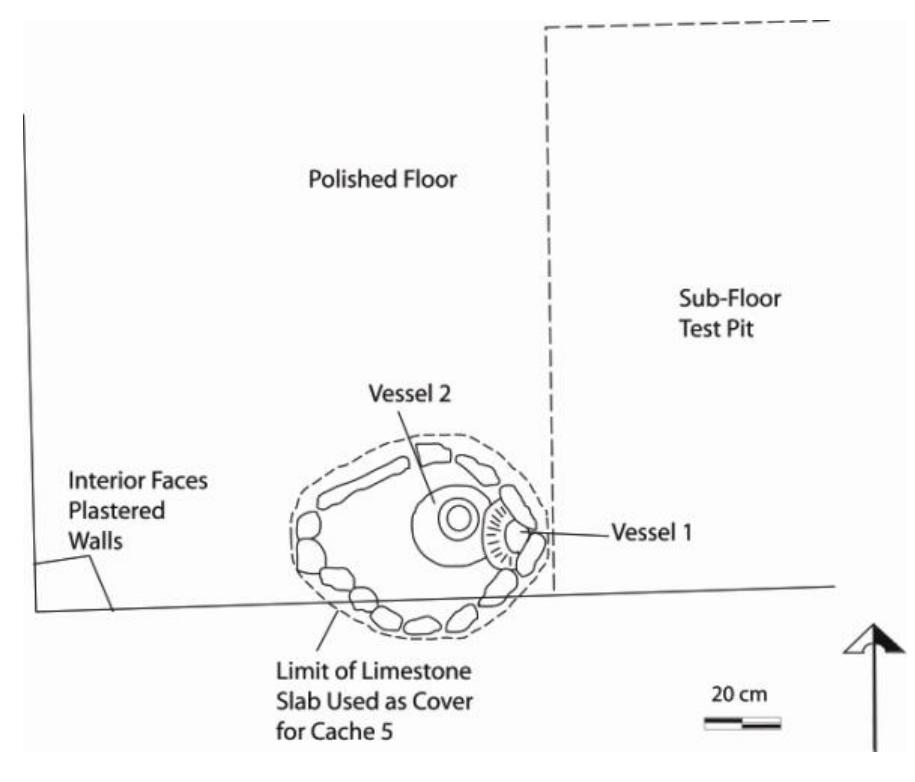
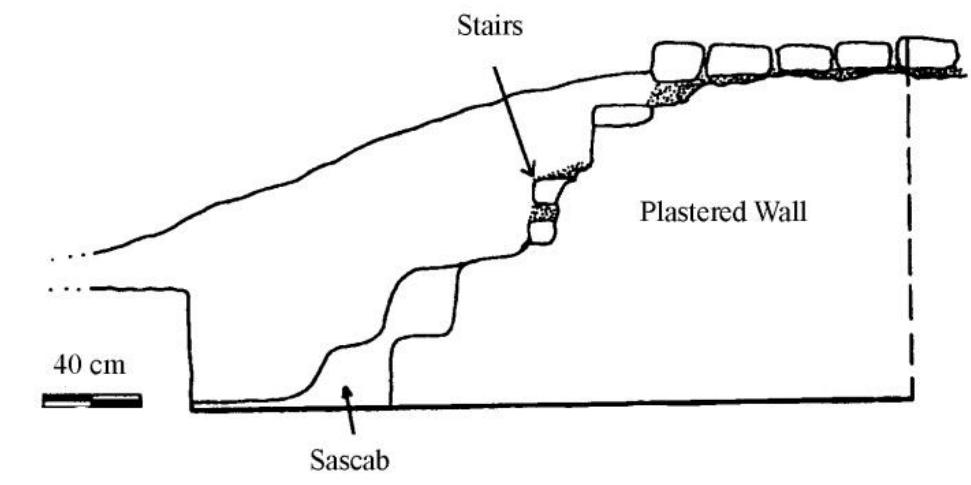





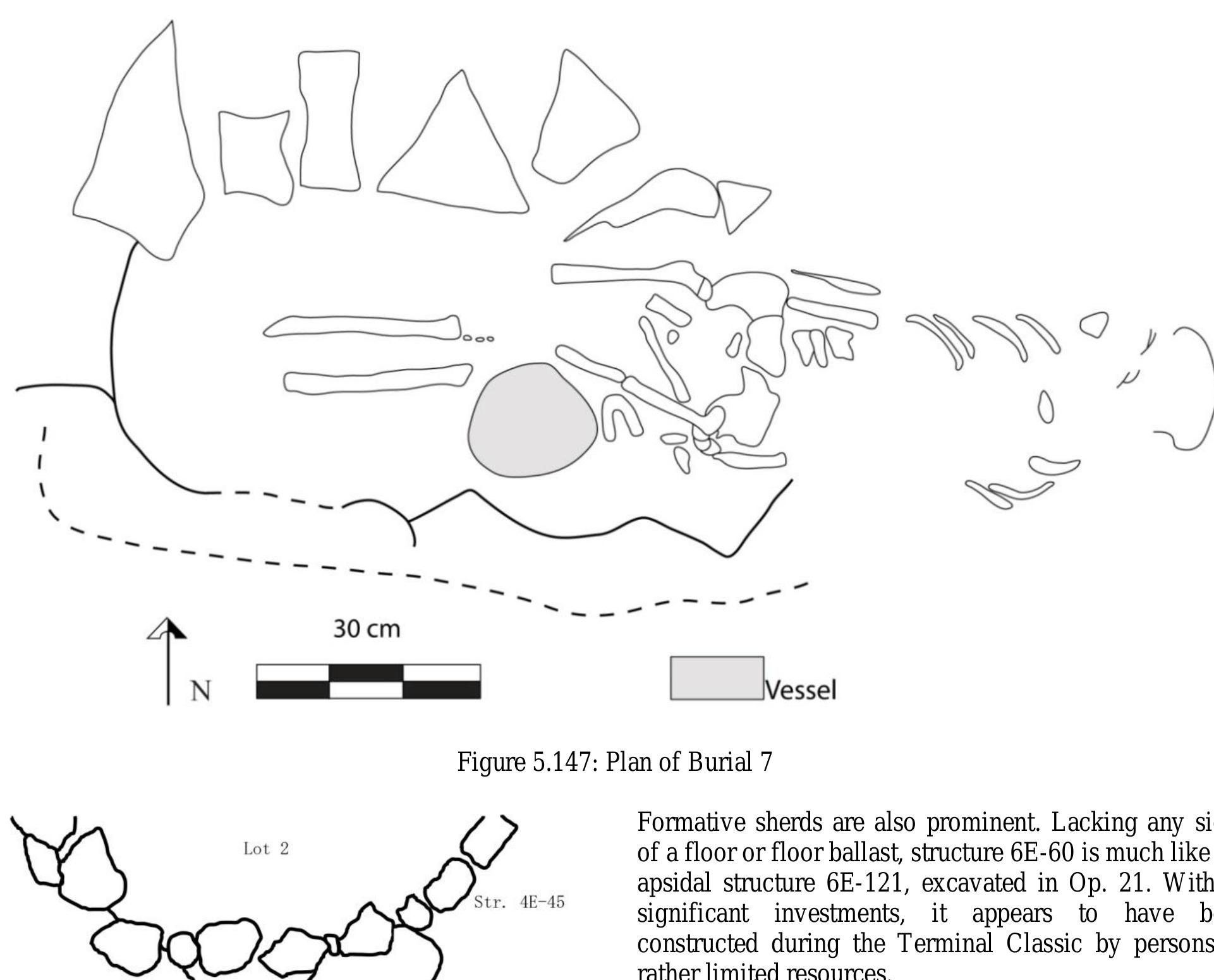


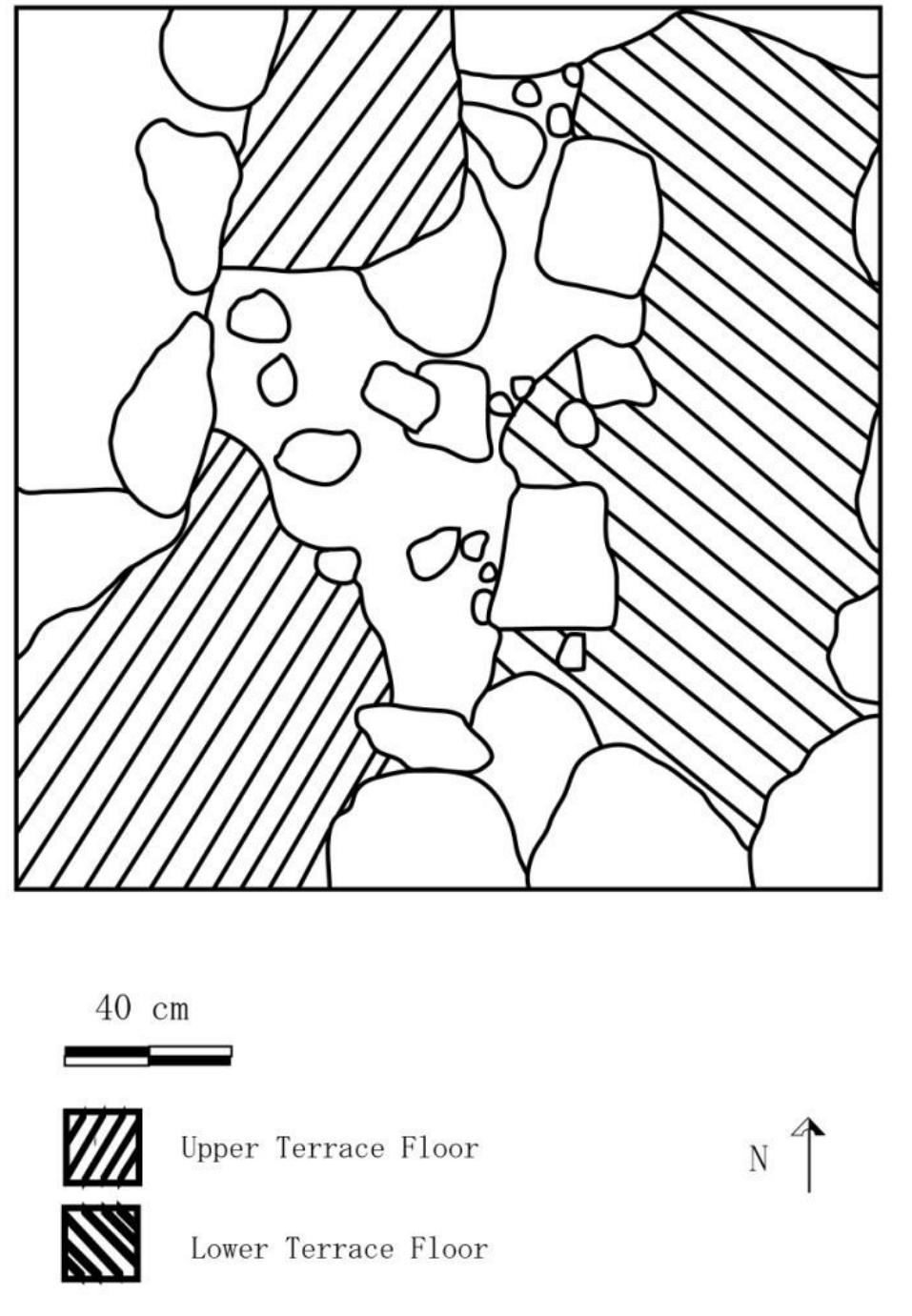













































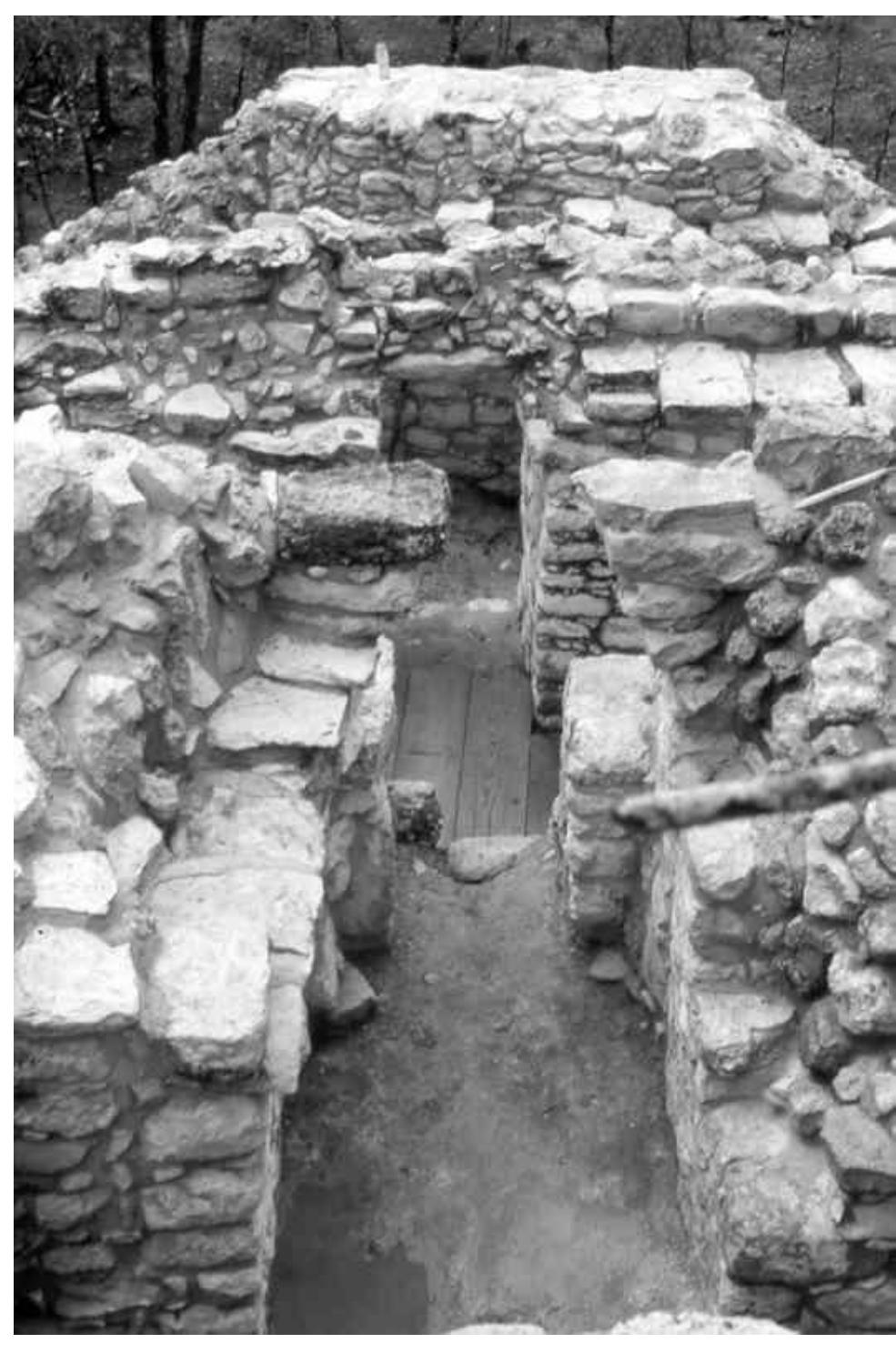






























































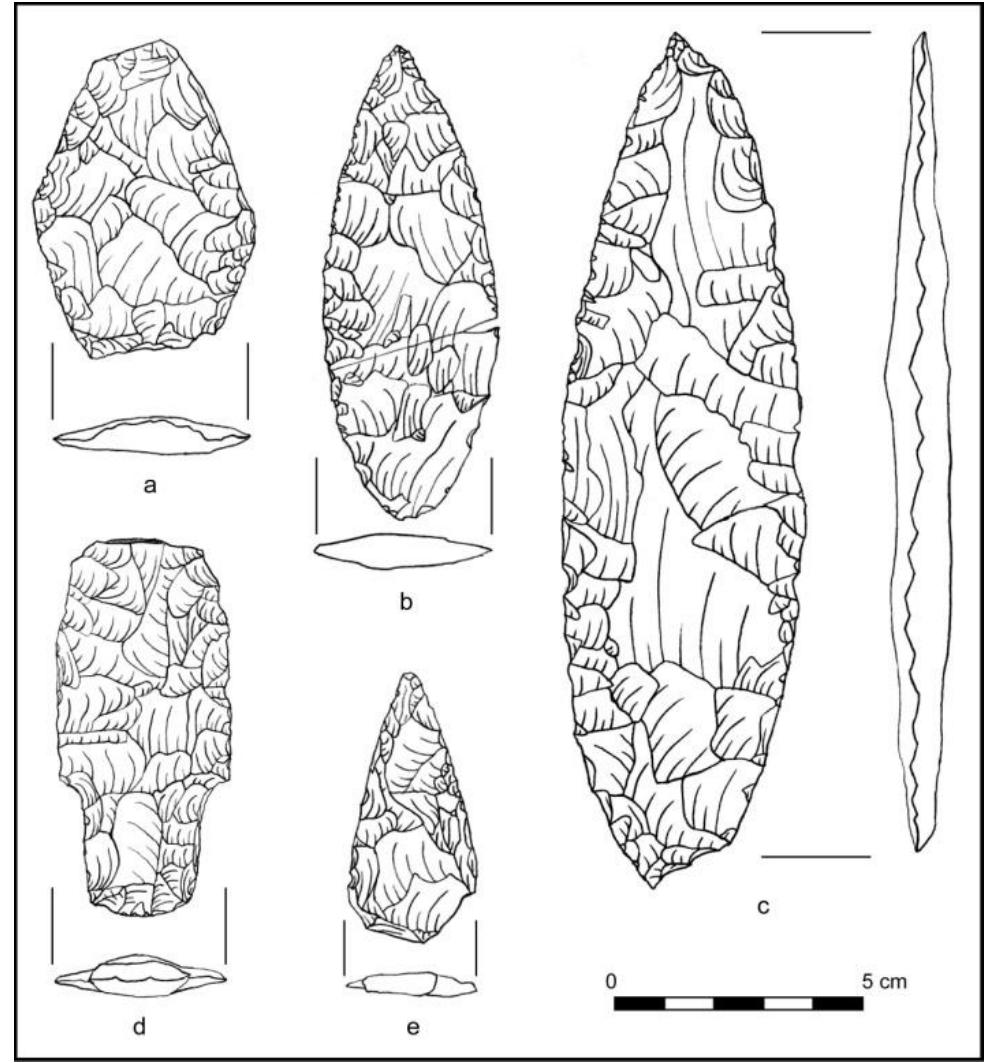














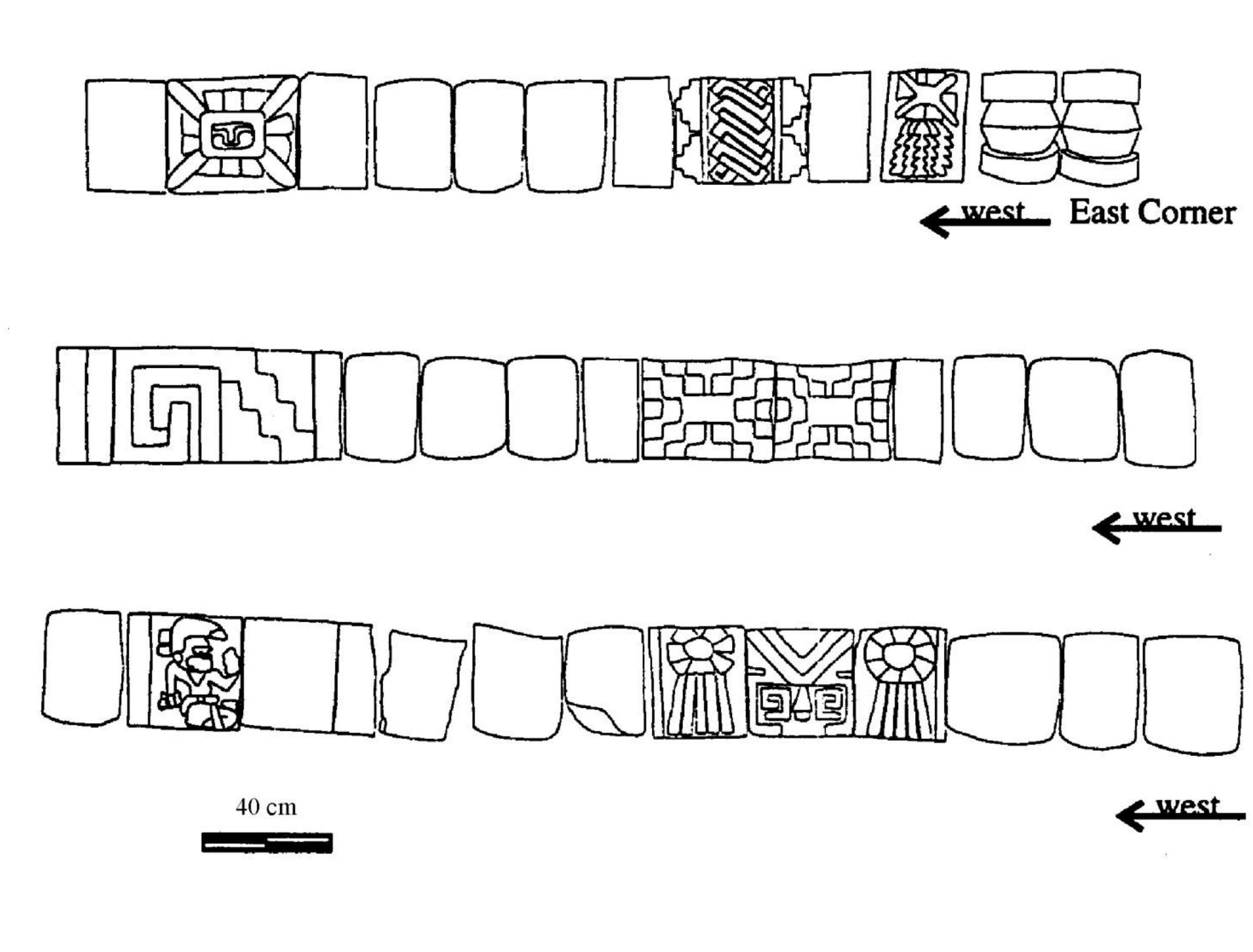





















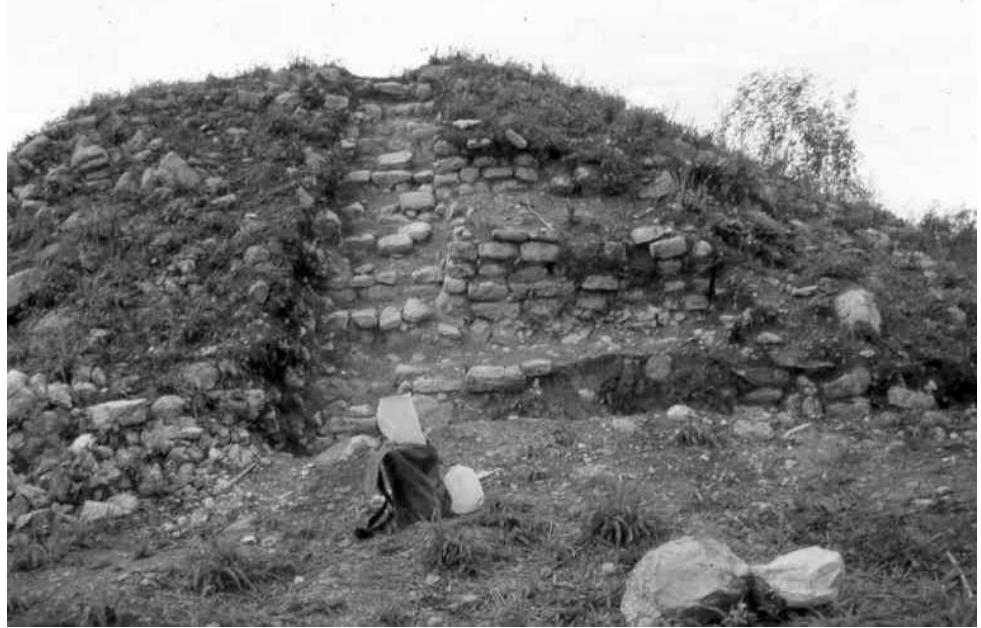



























![rice rat (Peromyscus sp.], kangaroo rat [Dipodomys ordii]), and one rabbit (cottontail rabbit [Sylvilagus floridanus]). The three opossum species constitute common inhabitants of the peninsula’s primary and secondary forests (Reid 1997:43, 45, 47-48). The armadillo is widespread throughout the Yucatan peninsula (Reid 1997:60). Regarding Yaxunda’s bats, one species for each of the three major families and subfamilies of the Maya area could be identified. The long-tongued bat, widespread and abundant in secondary forest, represents the taxonomic subfamily of the nectar- feeding bats (Glossophaginae) (Reid 1997:104, 106). The Jamaican fruit-eating bat, also abundant and widespread throughout the Maya area, constitutes the largest member of the subfamily of the tailless bats (Stenodermatinae) (Reid 1997:118, 124), while the small mouse-eared bat species identified, probably Myotis keaysi, represents a common inhabitant of secondary forests the family of the plain-nosed bats (Vespertilionidae) (Reid 1997:146, 152). The rodents and rabbit give similar ecological information, reflecting secondary dry forests as habitat requirements (Reid 1997). The dog bones recovered at Y axuna indicate that only type of domestic dog found at the site, according to morphology and size, was the short-faced modern and common rural dog in Yucatan. No specimens of the dwarf dog (tlalchichi) or the hairless dog (xolotlizcuintli) were encountered (see osteological and morphological definitions for Prehispanic dog types in Valadez 1994, 2000, 2003:125-129), although specimens of these dog types were found at Prehispanic sites nearby (Gotz 2008a). As the domestic dog specimens constitute the only clearly domestic fauna of the sample, the remaining fauna was defined as “wild”. The lack of other clearly domestic types at Yaxuna does not mule out the possibility that some other animals were not held captive or even tamed at some point. Yet these other possible situations cover animals of natural and non-domestic origin’.](https://figures.academia-assets.com/31130132/figure_389.jpg)












Related papers
AAA, 1992
This paper presents our growing realization that not only was there evidence for early Preclassic occupation at Yaxuna but that it was accompanied by monumental architecture.
Ancient Mesoamerica, 1998
Research at the ancient Maya city of Yaxuna, located in the heart of the Yucatan Peninsula, has provided sufficient data to suggest a preliminary chronological framework for the cultural development of this large polity. Primary ceramic and stratigraphic data are presented to support a five-phase scheme of cultural history, encompassing the Middle Formative through Postclassic periods (500 B.C.-A.D. 1250). In addition to chronological significance, the political ramifications of a pan-lowland ceramic trade are addressed. Yaxuna experienced an early florescence in the Late Formative-Early Classic periods, when it was the largest urban center in the central peninsula. A second renaissance in the Terminal Classic period was the result of Yaxuna's role in an alliance between the Puuc and Coba, in opposition to growing Itza militancy. This paper proposes a chronological framework for the cultural development of one northern Maya region in order to facilitate an understanding of this area as part of the overall history of polity interaction and competition in the Maya lowlands.
2002
My good friend and fellow Yaxunah original Grace Bascope and I put this together. I don't know if it ever got out in the real world. Anyway, this is current as of 2002. Should one ever venture out that way; feel free to grab this and enjoy the wander. It really is a special place.
The University of Arizona Press eBooks, 2017
The Cycling of an Era: Chichén Itzá and the Decline of Yaxuná Notes References Index PREFACE AND ACKNOWLEDGMENTS • XvII and 1990 through the good offices of George Stuart and from the National Endowment for the Humanities in 1988 and 1991. This project also received funding from a group of philanthropists in Dallas, Texas, through a nonprofit foundation originally organized by T. Tim Cullum. The Dallas group was convened and inspired by Stanley Marcus, long-term mentor to David Freidel during his years at Southern Methodist University. These Dallas friends have supported David Freidel's fieldwork and scholarship throughout his career. Finally, Jerome E. Glick began his support of David Freidel's work with the Yaxuná project, and that support has continued ever since. Distinguished professional colleagues in northern lowland archaeology, Edward Kurjack, Anthony P. Andrews, and Tomás Gallereta Negrón originally took David Freidel to Yaxuná and introduced him to the site and the community. Their collegiality and support ensured the successful launching of the first Yaxuná project. Fernando Robles Castellanos supported and participated in the Yaxuná research in ways critical to the discoveries and analyses presented in this book. The PIPCY project owes a great debt to the Consejo de Arqueología of the Instituto Nacional de Antropología e Historia for granting the permits to conduct this research, in particular Nelly Robles, Pedro Francisco Sánchez Nava, and María de los Ángeles Olay Barrientos, as well as all of our colleagues in the Mérida regional center, including Lourdes Toscano Hernández, José Osorio León, and Francisco Pérez, who have offered invaluable insight as responsables of the archaeological sites in the Municipio de Yaxcabá. Project co-directors over the years, Aline Magnoni, Traci Ardren, and Scott Hutson, deserve special thanks for getting this project off the ground and nurturing the research to the state it is in today. We thank the many students from the Universidad de las Américas Puebla who worked in a number of capacities on the project over the years, especially
1994
This paper (and noted updates within) really marked the first time where we had internal project agreement on Yaxuna's ceramic sequence and was the basis for the 1998 Ancient Mesoamerica ceramic chronology paper.
Assumptions concerning the late dating of Middle Formative ceramics in the northern Maya lowlands and similarities between this region and areas to the south underlie mainstream interpretations that the northern Maya lowlands was slower to develop cultural complexity. This paper is a re-evaluation of these assumptions and their impact on interpretations of Formative interaction. Recent research at Yaxuna, Yucatan, Mexico is discussed in light of alternative approaches to the study of sociopolitical interaction among early complex societies.

Loading Preview
Sorry, preview is currently unavailable. You can download the paper by clicking the button above.
References (158)
- Abrams, Elliot M. 1994 How the Maya Built Their World: Energetics and Ancient Architecture. University of Texas Press, Austin.
- Alexander, Rani T. 2004 Yaxcabá and the Caste War of Yucatán: An Archaeological Perspective. University of New Mexico Press, Albuquerque.
- Allaby, Michael 1999 Dictionary of Zoology. Oxford University Press, Oxford.
- Álvarez, Ticul, and Aurelio Ocaña 1999 Sinopsis de Restos Arqueozoológicos de Vertebrados Terrestres -Basada en Informes del Laboratorio de Paleozoología del Instituto Nacional de Antropología e Historia, México D.F. Colección Científica, Vol. 386. Instituto Nacional de Antropología e Historia, México, D.F. Ambrosino, James N. 1997 A Desecrated Burial from Yaxuná, Yucatán and Its Implications for Maya Governance and Warfare. Paper Presented at the 62 nd Annual Meeting of the Society for American Archaeology, Nashville. 2002 The Ritual Destruction of Buildings in the Maya Lowlands: Evidence from Yaxuna, Yucatan, Mexico. In Tercer Congreso Internacional de Mayistas: Memoria (9 al 15 de Julio de 1995), Volumen I, pp. 361-373. Universidad Nacional Autónoma de México, D.F. 2003 The Function of a Maya Palace at Yaxuna: A Contextual Approach. In Maya Palaces and Elite Residences: An Interdisciplinary Approach, edited by J. J. Christie, pp. 253-273. The University of Texas Press, Austin. 2007 Warfare and Destruction in the Maya Lowlands: Pattern and Process Archaeological Record of Yaxuna, Yucatan, Mexico. Unpublished Ph.D. dissertation, Department of Anthropology, Southern Methodist University, Dallas.
- Ambrosino, James N., Traci Ardren, and Kam Manahan 2001 Fortificaciones Defensivos en Yaxuná, Yucatán. In Yucatán a Través de los Siglos, edited by R. Gubler and P. Martel, pp. 49-66. Universidad Autónoma de Yucatán, Mérida.
- Ambrosino, James N., Traci Ardren, and Travis W. Stanton 2003 The History of Warfare at Yaxuná. In Ancient Mesoamerican Warfare, edited by M. K. Brown and T. W. Stanton, pp. 109-123. AltaMira Press, Walnut Creek.
- Andrews, Anthony P, E. Wyllys Andrews V, and Fernando Robles Castellanos 2003 The Northern Maya Collapse and Its Aftermath. Ancient Mesoamerica 14:151-156.
- Andrews, Anthony P., and Fernando Robles Castellanos 1985 Chichen Itza and Coba: An Itza-Maya Standoff in Early Postclassic Yucatan. In The Lowland Maya Postclassic, edited by A.F. Chase and P.M. Rice, pp.62-72. University of Texas Press, Austin. 2004 An Archaeological Survey of Northwest Yucatan, Mexico. Mexicon 25:7-14.
- Andrews, E. Wyllys, IV 1942 Yucatan: Architecture. Carnegie Institution of Washington Yearbook 41:257-263.
- Andrews, E. Wyllys, IV, and E. Wyllys Andrews V 1980 Excavations at Dzibilchaltun, Yucatan, Mexico. Middle American Research Institute, Pub. 48. Tulane University, New Orleans.
- Andrews, E. Wyllys, V 1979 Some Comments on Puuc Architecture of the Northern Yucatan Peninsula. In The Puuc, edited by L. Mills, pp. 1-17. Scholarly Studies in the Liberal Arts Pub. 1. Central College, Iowa. 1981 Dzibilchaltun. In Supplement to the Handbook of Middle American Indians, edited by V.R. Bricker and J.A. Sabloff, pp. 313-344. University of Texas Press, Austin. 1986 Olmec Jades from Chacsinkin, Yucatan, and Maya Ceramics from La Venta, Tabasco. In Research and Reflections in Archaeology and History: Essays in Honor of Doris Stone, edited by E.W. Andrews V, pp. 11-49. Middle
- American Research Institute, Pub 57. Tulane University, New Orleans. 1988 Ceramic Units from Komchen, Yucatan, Mexico. Ceramica de Cultura Maya 15:51-64. 1990 The Early Ceramic History of the Lowland Maya. In Vision and Revision in Maya Studies, edited by F.S. Clancy and P.D. Harrison, pp. 1- 19. University of New Mexico Press, Albuquerque.
- Andrews, E. Wyllys, V, and Norman Hammond 1990 Redefinition of the Swasey Phase at Cuello, Belize. American Antiquity 55:570-584.
- Andrews, E. Wyllys, V, and William M. Ringle 1992 Los Mayas Tempranos en Yucatán: Investigaciones Arqueológicas en Komchen. Mayab 8:5-17.
- Andrews, E. Wyllys, V, and Jeremy A. Sabloff 1986 Classic to Postclassic: A Summary Discussion. In Late Lowland Maya Civilization, edited by J.A. Sabloff and E.W. Andrews V, pp. 433-456. University of New Mexico Press, Albuquerque. Ardren, Traci 1997 The Politics of Place: Architecture and Cultural Change at the Xkanha Group, Yaxuna, Yucatan, Mexico. Unpublished Ph.D. dissertation, Department of Anthropology, Yale University, New Haven. 2002 Death Became Her: Images of Female Power from Yaxuna Burials. In Ancient Maya Women, edited by T. Ardren, pp. 68-88. AltaMira Press, Walnut Creek. 2003 Memoria y la Historia Arquitectónica en la Estructura 6E-13 de Yaxuná. Temas Antropológicos 25(1/2):129-146.
- Ardren, T., S. Bennett, D. Freidel, D. Johnstone, and C. Suhler 1994 The Selz Foundation Yaxuna Project: Final Report of the 1993 Field Season. Southern Methodist University, Dallas.
- Ardren, Traci, Charles K. Suhler, and Dave Johnstone 1998 Evidence for Late Classic Conflict at Yaxuna: Warfare at the Borderlands. Paper Presented at the 63 rd Annual Meeting of the Society for American Archaeology, Seattle.
- Ashmore, Wendy 1989 Construction and Cosmology: Politics and Ideology in Lowland Maya Settlement Patterns. In Word and Image in Maya Culture: Explorations in Language, Writing, and Representation, edited by W.F. Hanks and D.S. Rice, pp. 272-286. University of Utah Press, Salt Lake City. 1991 Site-Planning Principles and Concepts of Directionality Among the Ancient Maya. Latin American Antiquity 2:199-225. 1995 Ritual Landscapes in the Xunantunich Area. Paper Presented at the First International Symposium on Maya Archaeology.
- Awe, Jaime J. 1992 Dawn in the Land Between the Rivers: Formative Occupation at Cahal Pech, Belize and its Implications for Preclassic Development in the Maya Lowlands. Unpublished Ph.D. dissertation, Institute of Archaeology, University of London, London.
- Back, William, and Bruce Hanshaw 1976 Hydrochemistry of the Northern Yucatan Peninsula, Mexico with a Section on Mayan Water Practices. In Carbonate Rocks and Hydrology of the Yucatan Peninsula, Mexico, edited by A.E. Weidie and W.C. Ward, pp. 211- 243. New Orleans Geological Society, New Orleans.
- Ball, Joseph W. 1977 The Archaeological Ceramics of Becan, Campeche, Mexico. Middle American Research Institute, Pub. 43. Tulane University, New Orleans. 1979 Ceramics, Culture History, and the Puuc Tradition: Some Alternative Possibilities. In The Puuc, edited by L. Mills, pp. 18-35. Scholarly Studies in the Liberal Arts Pub. 1. Central College, Iowa. 1986
- Campeche, the Itza, and the Postclassic: A Study in Ethnohistorical Archaeology. In Late Lowland Maya Civilization, edited by J.A. Sabloff and E.W. Andrews V, pp. 379-408. University of New Mexico Press, Albuquerque. 1993 Pottery, Potters, and Polities: Some Socioeconomic and Political Implications of Late Classic Maya Ceramic Industries. In Lowland Maya Civilization in the Eighth Century A.D., edited by J.A. Sabloff and J.S. Henderson, pp. 243-272. Dumbarton Oaks, Washington, D.C. Ball, Joseph W., and Jennifer T. Taschek 1989 Teotihuacan's Fall and the Rise of the Itza: Realignments and Role Changes in the Terminal Classic Maya Lowlands. In Mesoamerica After the Decline of Teotihuacan, A.D. 700-900, edited by R.A. Diehl and J.C. Berlo, pp. 187-200. Dumbarton Oaks Research Library and Collection, Washington, D.C.
- Ballinger, Diane A., and Jeffrey Stomper 2000 The Jaguars of Altar Q, Copán, Honduras: Faunal Analysis, Archaeology, and Ecology. Journal of Ethnobiology, 20(2): 223-236.
- Bennett, Robert R. 1930 The Ancient Maya Causeway in Yucatan. Indian Notes 7:347-382.
- Bey, George J., III, Carlos Peraza Lope, and William M. Ringle 1992 Comparative Analysis of Late Classic Period Ceramic Complexes of the Northern Maya Lowlands. Ceramica de Cultura Maya 16:11- 17.
- Bey, G.J., III, T.M. Bond, W.M. Ringle, C.A. Hanson, C.W. Houck, and C. Peraza Lope 1998 The Ceramic Chronology of Ek Balam, Yucatan, Mexico. Ancient Mesoamerica 9:101-120.
- Binford, Lewis 1981 Bones: Ancient Men and Modern Myths. Academic Press, New York.
- Binford, M.W., M. Brenner, T.J. Whitmore, A. Higuera- Gundy, E.S. Deevey, and B. Leyden 1987 Ecosystems, Paleoecology, and Human Disturbance in Subtropical and Tropical America. Quaternary Science Reviews 6:115- 128. Blasco Sancho, María Fernanda 1992 Tafonomía y Prehistoria. Publication No. 36. Universidad de Zaragoza, Zaragoza. Bolles, John 1977 Las Monjas: A Major Pre-Mexican Architectural Complex at Chichen Itza. University of Oklahoma Press, Norman.
- Bond-Freeman, Tara M., and Eugenia B. Mansell 2006 Análisis Cerámico Preliminar del Proyecto Pakbeh: Programa de la Economía Regional de Chunchucmil. In Los Mayas de Ayer y Hoy: Memorias del Primer Congreso Internacional de Cultura Maya, Tomo I, edited by A. Barrera Rubio and R. Gubler, pp. 62-72. Eugenia Montalván Proyectos Culturales S.C.P., Mérida. Boucher, Sylviane 1992 Cerámica Pizarra Temprana; Algunos Precursores y Variantes Regionales. In Memorias del Primer Congreso Internacional de Mayistas, pp. 464-476. Universidad Nacional Autónoma de México, México, D.F. Collection of Digital Photographs of the Skeletal Elements from 243 Vertebrate Species of Northern and Central America, Compiled by C. Götz under the direction of K. F. Emery. Florida Museum of Natural History, Gainesville. Emery, Kitty F. 1999 Informe Zooarqueológico: Temporada de 1999. In Proyecto Arqueológico Piedras Negras, Informe Preliminar No. 3, Tercera Temporada, 1999, edited by H. L. Escobedo and S. D. Houston, pp. 401-404. Report to the Instituto de Antropología e Historia. Guatemala. 2001 Fauna. In Archaeology of Ancient Mexico and Central America: An Encyclopedia, edited by S. T. Evans and D. L. Webster, pp. 255-265.
- Fash, B.W., W. Fash, S. Lane, R. Larios, L. Schele, J. Stomper, and D. Stuart 1992 Investigations of a Classic Maya Council House at Copan, Honduras. Journal of Field Archaeology 19:419-442.
- Fisher, John W., Jr. 1995 Bone Surface Modifications in Zooarchaeology. Journal of Archaeological Method and Theory 2(1):7-68.
- Folan, William J. 1977 El Sacbe Coba-Ixil: Un Camino Maya del Pasado. Nueva Antropologia 6:31-42. 1983 Urban Organization and Social Structure of Coba. In Coba: A Classic Maya Metropolis, edited by W.J. Folan, E.R. Kintz, and L.A. Fletcher, pp. 49-63. Academic Press, New York.
- Folan, William J., and George E. Stuart 1974 Coba Archaeological Mapping Project, Quintana Roo, Mexico. Boletín de la Escuela de Ciencias Antropológicas de la Univesidad de Yucatán 22- 23:20-29.
- Forsyth, Donald W. 1989 The Ceramics of El Mirador, Peten, Guatemala, El Mirador Series, Part 2. Papers of the New World Archaeological Foundation, No. 63, Brigham Young University, Provo.
- Freidel, David A. 1979 Cultural Areas and Interaction Spheres: Contrasting Approaches to the Emergence of Civilization in the Maya Lowlands. American Antiquity 44:6-54. 1981 Continuity and Disjunction: Late Postclassic Settlement Patterns in Northern Yucatan. In Lowland Maya Settlement Patterns, edited by W. Ashmore, pp. 311-332. University of New Mexico Press, Albuquerque. 1986 The Monumental Architecture. In Archaeology at Cerros Belize, Central America, Volume I: An Interim Report, edited by D. A. Freidel and R. A. Robertson, pp. 1-22. Southern Methodist University Press, Dallas. 1987 Yaxuna Archaeological Survey: A Report of the 1986 Field Season. Southern Methodist University, Dallas. 1992 Children of First Father's Skull: Terminal Classic Warfare in the Northern Maya Lowlands. In Mesoamerican Elites: An Archaeological Assessment, edited by D.Z. Chase and A.F. Chase, pp. 99-117. University of Oklahoma Press, Norman.
- Freidel, David A., Barbara MacLeod, and Charles K. Suhler 2003 Early Classic Maya Conquest in Words and Deeds. In Ancient Mesoamerican Warfare, edited by M. K. Brown and T. W. Stanton, pp. 189-215. AltaMira Press, Walnut Creek.
- Freidel, David A., and Jeremy A. Sabloff 1984 Cozumel: Late Maya Settlement Patterns. Academic Press, INC., New York.
- Freidel, David A., and Charles K. Suhler 1995 Crown of Creation: The Development of the Maya Royal Diadems in the Late Preclassic and Early Classic Periods. In The Emergence of Lowland Maya Civilization, edited by N. Grube, pp. 137-150. Acta Mesoamericana 8. Verlag Anton Saurwein, Möckmühl. 1998 Visiones Serpentinas y Laberintos Mayas. Arqueología Mexicana 6(34):28-37. 1999 The Path of Life: Toward a Functional Analysis of Ancient Maya Architecture. In Mesoamerican Architecture as a Cultural Symbol, edited by J.K. Kowalski, pp. 250-273.
- Freidel, David A., Charles K. Suhler, George J. Bey III, Kent Reilly, Travis W. Stanton, Tara Bond-Freeman, and Fernando Robles Castellanos n.d. Early Royal Accession Platforms at Yaxuna, Yucatan, Mexico: Possible Evidence of Direct Olmec-Maya Political Interaction. Manuscript submitted to American Anthropologist.
- Freidel, David A., Charles K. Suhler, and Rafael Cobos Palma 1992 The Selz Foundation Yaxuna Project: Final Report of the 1991 Field Season. Southern Methodist University, Dallas. 1998 Termination Ritual Deposits at Yaxuna: Detecting the Historical in Archaeological Contexts. In The Sowing and the Dawning: Termination, Dedication, and Transformation in the Archaeological and Ethnographic Record of Mesoamerica, edited by S. B. Mock, pp. 135- 144. University of New Mexico Press, Albuquerque.
- Freidel, David A., Charles K. Suhler, and Ruth Krochock 1990 Yaxuna Archaeological Survey: A Report of the 1989 Field Season and Final Report on Phase One. Southern Methodist University, Dallas. Fry, Robert E. 1989 Regional Ceramic Distributional Patterning in Northern Belize: The View from Pulltrouser Swamp. In Prehistoric Maya Economies of Belize, edited by P.A. McAnany and B.L. Isaac, pp. 91-111. Research in Economic Anthropology Supplement 4, JAI Press, Greenwich.
- Gallareta Negrón, Tomás, Anthony P. Andrews, and Rafael Cobos Palma 1988 Preliminary Report of the Cupul Survey Project: An Archaeological Reconnaissance Between Chichén Itzá and the North Coast of Yucatán, Mexico. Report to the Centro Regional de Yucatán, Mérida.
- Garber, James F. 1981 Material Culture and Patterns of Artifact Consumption and Disposal at the Maya Site of Cerros in Northern Belize. Unpublished Ph.D. dissertation, Department of Anthropology, Southern Methodist University, Dallas.
- García Lara, Sergio 2008 Análisis Zooarqueológico de la Fauna Recuperada en la Estructura II de Calakmul, Campeche, México. Tesis Profesional, Licenciado en Ciencias Antropológicas en la Especialidad de Arqueología, Universidad Autónoma de Yucatán, Mérida. Gifford, James C. 1976 Prehistoric Pottery Analysis and the Ceramics of Barton Ramie in the Belize Valley. Memoirs of the Peabody Museum of Archaeology and Ethnology Vol. 18. Harvard University, Cambridge.
- Gilbert, B. Miles 2003 Mammalian Osteology. Missouri Archaeological Society, Columbia.
- Gilbert, Miles, Larry Martin, and Howard Savage 1996 Avian Osteology. Missouri Archaeological Society, Columbia.
- Gomez-Pompa, Arturo 1998 Vegetation of the Maya Region. In Maya, edited by P. Schmidt, M. de la Garza, and E. Nalda, pp. 39-51. Rizzoli International Publications, INC., New York.
- González Torres, Yolotl 1991 Diccionario de Mitología y Religión de Mesoamérica. Larousse, México, D.F. Götz, Christopher M. 2006 Patrones de Aprovechamiento de Fauna Vertebrada Marina y Terrestre por los Antiguos Habitantes de Champotón, Campeche. Los Investigadores de la Cultura Maya 14(II):431- 444.
- 2008a Verwendung von Wirbeltieren durch die Mayas des Nördlichen Tieflandes Während der Klassik und Postklassik (600 -1500 n.Chr.). Internationale Archäologie, Vol. 106. Marie Leidorf Verlag GmbH, Rahden, Westfalen. 2008b Coastal and Inland Patterns of Faunal Exploitation. Quaternary International. in press Götz, Christopher M., and Travis W. Stanton n.d Archaeological, Ethnohistoric and Ethnographic Perspectives on the Use of Animals by the Prehispanic Maya of the Northern Lowlands. In Archaeology of Mesoamerican Animals, edited by C. M. Götz and K. F. Emery. David Brown Book Company, London
- Greene Robertson, Merle 1986 Some Observations on the X'telhu Panels at Yaxcaba, Yucatan. In Research and Reflections in Archaeology and History: Essays in Honor of Doris Stone, edited by E.W. Andrews V, pp. 87- 111. Middle American Research Institute, Pub 57. Tulane University, New Orleans.
- Grube, Nikolai 1992 Classic Maya Dance: Evidence from Hieroglyphs and Iconography. Ancient Mesoamerica 3:201-218.
- Hamblin, Nancy L. 1984 Animal Use by the Cozumel Maya. University of Arizona Press, Tucson.
- Hanks, William 1990 Referential Practice: Language and Lived Space among the Maya. University of Chicago Press, Chicago.
- Hansen, Richard D. 1992 The Archaeology of Ideology: A Study of Maya Preclassic Architectural Sculpture at Nakbe, Peten, Guatemala. Unpublished Ph.D. dissertation, Department of Anthropology, University of California, Los Angeles. 1998 Continuity and Disjunction: The Pre-Classic Antecedents of Classic Maya Architecture. In Function and Meaning in Classic Maya Architecture, edited by S.D. Houston, pp. 49- 122. Dumbarton Oaks Research Library and Collection, Washington, D.C. Hillson, Simon 1999 Mammal Bones and Teeth. Institute of Archaeology, Dorset Press, Dorset.
- Hodell, David A., Mark Brenner, and Jason H. Curti 2007 Climate and Cultural History of the Northeastern Yucatan Peninsula, Quintana Roo, Mexico. Climatic Change 83:215-240.
- Hodell, David A., Mark Brenner, Jason H. Curtis, Roger Medina-González, Enrique Ildefonso-Chan Can, Alma Albornaz-Pat, and Thomas P. Guilderson 2005 Climate Change on the Yucatan Peninsula during the Little Ice Age. Quaternary Research 63:109-121.
- Hodell, David A., Jason H. Curtis, and Mark Brenner 1995 Possible Role of Climate in the Collapse of Classic Maya Civilization. Nature 375:391-394.
- Howell, Steve N.G., and Sophie Webb 2004 A Guide to the Birds of Mexico and Northern Central America. Oxford University Press, New York.
- Isphording, W.C. 1975 The Physical Geography of Yucatan. Transactions, Gulf Coast Association of Geological Societies 25:231-262.
- Jiménez Álvarez, Socorro del Pilar 2002 La Cronología Cerámica del Puerto Maya de Xcambó, Costa Norte de Yucatán: Complejo Cerámico Xcambó y Complejo Cerámico Cayalac. Tesis Profesional, Licenciado en Ciencias Antropológicas en la Especialidad de Arqueología, Universidad Autónoma de Yucatán, Mérida.
- Joesink-Mandeville, LeRoy V. 1970 The Comparative Cultural Stratigraphy of Formative Complexes in the Maya Area: A Reappraisal in Light of New Evidence from Dzibilchaltun, Yucatan. Unpublished Ph.D. dissertation, Department of Anthropology, Tulane University, New Orleans. 1977 Olmec-Maya Relationships: A Correlation of Linguistical, Evidence with Archaeological Ceramics. Journal of New World Archaeology 2:30-39.
- Joesink-Mandeville, LeRoy V., and Sylvia Meluzin 1976 Olmec-Maya Relationships: Olmec Influence in Yucatan. In Origins of Religious Art and Iconography in Preclassic Mesoamerica, edited by H.B. Nicholson, pp. 87-105. UCLA Latin American Center Publications, Los Angeles. Johnstone, Dave 1994 Residential Excavations. In The Selz Foundation Yaxuna Project: Final Report of the 1993 Field Season, edited by T. Ardren, S. Bennett, D. A. Freidel, D. Johnstone, and C. K. Suhler, pp. 83-88. Southern Methodist University, Dallas. 2001 The Ceramics of Yaxuna. Unpublished Ph.D. dissertation, Department of Anthropology, Southern Methodist University, Dallas.
- Kepecs, Susan, and Sylviane Boucher 1996 The Pre-Hispanic Cultivation of Rejolladas and Stone-Lands: New Evidence from Northeast Yucatan. In The Managed Mosaic: Ancient Maya Agriculture and Resource Use, edited by S.L. Fedick, pp. 69-91. University of Utah Press, Salt Lake City.
- King, Eleanor, and Daniel Potter 1994 Small Sites in Prehistoric Socioeconomic Organization: A Perspective from Colha, Belize. In Archaeological View from the Countryside: Village Communities in Early Complex Societies, edited by G.M. Schwartz and S.E. Falconer, pp. 64-90. Smithsonian Institution Press, Washington, D.C. Kosakowsky, Laura J. 1987 Preclassic Maya Pottery at Cuello, Belize. Anthropological Papers of the University of Arizona, Number 47. The University of Arizona Press, Tucson.
- Kosakowsky, Laura J., and Duncan Pring 1991 Ceramic Chronology and Typology. In Cuello: An Early Maya Community in Belize, edited by N. Hammond, pp. 60-69. Cambridge University Press, Cambridge.
- Kowalski, J.K., A. Barrera R., H. Ojeda M., and J. Huchim H. 1996 Archaeological Excavations of a Round Temple at Uxmal: Summary Discussion and Implications for Northern Maya Culture History. In Eighth Palenque Round Table, 1993, Vol. X, edited by M. Macri and J. McHargue, pp. 281-296. Pre- Columbian Art Research Institute, San Francisco. Krochock, Ruth 1998 The Evolution of Political Rhetoric at Chichen Itza. Unpublished Ph.D. dissertation, Department of Anthropology, Southern Methodist University, Dallas. 2002 Women in the Hieroglyphic Inscriptions of Chichén Itzá. In Ancient Maya Women, edited by T. Ardren, pp. 152-170. AltaMira Press, Walnut Creek.
- Kurjack, Edward B. 1974 Distribution of Pre-Columbian Architecture in Northwestern Yucatan, Mexico. Paper Presented at the XLI International Congress of Americanists. Kurjack, Edward B., and Silvia Garza 1981 Pre-Columbian Community Form and Distribution in the Northern Maya Area. In Lowland Maya Settlement Patterns, edited by W. Ashmore, pp. 287-309. University of New Mexico Press.
- Laporte, Juan Pedro, and Vilma Fialko C. 1987 La Ceramica del Clasico Temprano Desde Mundo Perdido, Tikal: Una Reevaluacion. In Maya Ceramics, edited by P.M. Rice and R.J. Sharer, pp. 123-181. BAR International Series 345 (i), Oxford. 1990 New Perspectives on Old Problems: Dynastic References for the Early Classic at Tikal. In Vision and Revision in Maya Studies, edited by F.S. Clancy and P.D. Harrison, pp. 33 66. University of New Mexico Press, Albuquerque. 1995 Un Reencuentro con Mundo Perdido, Tikal, Guatemala. Ancient Mesoamerica 6:41-94.
- Lee, Julian G. 2000 A Field Guide to the Amphibians and Reptiles of the Maya World. Cornell University Press, London.
- Lee, Thomas A. 1985 Los Códices Mayas. Universidad Autónoma de Chiapas, Tuxtla Gutiérrez.
- Leopold, A. Starker 2000 Fauna Silvestre de México. Editorial Pax México, D.F.
- Leyden, Barbara W., Mark Brenner, and Bruce H. Dahlin 1998 Cultural and Climatic History of Coba, a Lowland Maya City in Quintana Roo, Mexico. Quaternary Research 49:111-122.
- Lincoln, Charles E. 1980 A Preliminary Assessment of Izamal, Yucatan, Mexico. Unpublished B.A. Honors Thesis, Tulane University, New Orleans. 1985 Ceramics and Ceramic Chronology. In A Consideration of the Early Classic Period in the Maya Lowlands, edited by G.R. Willey and P. Mathews, pp. 55-76. Institute for Mesoamerican Studies, Pub. 10. State University of New York at Albany, Albany. Littman, Edwin R. 1958 Ancient Mesoamerican Mortars, Plasters, and Stuccos: The Composition and Origin of Sascab. American Antiquity 24:172-176.
- López Austin, Alfredo 1996 Los Mitos del Tlacuache. Universidad Nacional Autónoma de México, D.F. Lothrop, Samuel K. 1924 Tulum: An Archaeological Study of the East Coast of Yucatan. Carnegie Institution of Bibliography
- Washington, Pub. 335. Carnegie Institution of Washington, Washington, D.C. Lowe, Gareth W. 1978 Eastern Mesoamerica. In Chronologies in New World Archeology, edited by R.E. Taylor and C.W. Meighan, pp. 331-393. Academic Press, New York.
- Lundell, Cyrus L. 1934 Preliminary Sketch of the Phytogeography of the Yucatan Peninsula. Contributions to American Archaeology No. 12, Carnegie Institution of Washington, Pub. 436. Carnegie Institution of Washington, Washington, D.C.
- Lyman, R. Lee 2001 Vertebrate Taphonomy. Cambridge University Press, Cambridge.
- Maldonado-Koerdell, Manuel 1964 Geohistory and Paleogeography of Middle America. In Natural Environment and Early Cultures, edited by R.C. West, pp. 3-32. Handbook of Middle American Indians, Vol. 1. University of Texas Press, Austin.
- Manahan, T. Kam, James N. Ambrosino, and Traci Ardren 1997 The Last Stand: Defensive Constructions at Yaxuna, Yucatan. Paper presented at the 62 nd Annual Meeting of the Society for American Archaeology.
- Martínez Campos, Gabriel, and Esperanza Salazar Zenil 2004 Recetario Colimense de la Iguana. Dirección General de Culturas Populares e Indígenas, CONACULTA, México, D.F. Masson, Marilyn A. 1995 Community Feasting Rituals and Postclassic Maya Village Political Structure: Evidence from Archaeofaunal Remains. Paper presented at the 60 th Annual Meeting of the Society for American Archaeology.
- Mathews, Jennifer P. 1998 The Ties That Bind: The Ancient Maya Interaction Spheres of the Late Preclassic and Early Classic Periods in the Northern Yucatan Peninsula. Unpublished Ph.D. dissertation, University of California, Riverside. McAnany, Patricia A. 1995 Living with the Ancestors. University of Texas Press, Austin.
- Medellín, Rodrigo A., Alfred L. Gardener, and J. Marcelo Aranda 1998 The Taxonomic Status of the Yucatán Brown Brocket, Mazama pandora (Mammalia: Cervidae). Proceedings of the Biological Society of Washington 111(1):1-14.
- Medina Martín, Cecilia 2005 Restos Expuestos al Fuego en Calakmul, Campeche. Tesis Profesional, Licenciado en Ciencias Antropológicas en la Especialidad de Arqueología, Universidad Autónoma de Yucatán, Mérida.
- Miller, Arthur G. 1974 The Iconography of the Painting in the Temple of the Diving God, Tulum, Quintana Roo, Mexico: The Twisted Cords. In Mesoamerican Archaeology: New Approaches, edited by N. Hammond, pp. 167-186. The University of Texas Press, Austin.
- Moholy-Nagy, Hattula 2004 Vertebrates in Tikal Burials and Caches. In Maya Zooarchaeology: New Directions in Method and Theory, edited by K. F. Emery, pp. 193-208. Cotsen Institute of Archaeology, Monograph 51. University of California, Los Angeles.
- Navarrete, Carlos, María José Con Uribe, and Alejandro Martínez Muriel 1979 Observaciones Arqueológicas en Cobá, Quintana Roo. Centro de Estudios Mayas, UNAM, México, D.F Neff, H., R.L. Bishop, E.B. Sisson, M.D. Glascock, and P.R. Sisson 1994 Neutron Activation Analysis of Late Postclassic Polychrome Pottery from Central Mexico. In Mixteca-Puebla: Discoveries and Research in Mesoamerican Art and Archaeology, edited by H.B. Nicholson and E. Quinones K., pp. 117- 141. Labyrinthos, Culver City.
- O'Connor, Terry 2000 The Archaeology of Animal Bones. Texas A&M University Press, College Station. 2003 The Analysis of Animal Bone Assemblages: A Handbook for Archaeologists. York Archaeological Trust and Council for British Archaeoloy, York.
- Olsen, Stanley J. 1964 Mammal Remains from Archaeological Sites. Papers of the Peabody Museum of Archaeology and Ethnology, vol. 56(1). Harvard University Press, Cambridge. 1968
- Fish, Amphibian, and Reptile Remains from Archaeological Sites. Papers of the Peabody Museum of Archaeology and Ethnology, vol. 56(2). Harvard University Press, Cambridge. 1972 Animal Remains from Altar de Sacrificios. In The Artifacts of Altar de Sacrificios, edited by G. R. Willey, pp. 243-246. Papers of the Peabody Museum of Archaeology and Ethnology, vol. 64, no. 1. Harvard University Press, Cambridge. 1978 Vertebrate Faunal Remains. In Excavations at Seibal, edited by G. R. Willey, pp. 172-176. Memoirs of the Peabody Museum of Archaeology and Ethnology, vol. 14, Nos. 1-3. Harvard University Press, Cambridge. 1982 An Osteology of Some Maya Mammals. Papers of the Peabody Museum of Archaeology and Ethnology, vol. 73. Harvard University Press, Cambridge. 1985 Origins of the Domestic Dog: The Fossil Record. University of Arizona Press, Tucson.
- O'Neill, John 1933 Survey of Yaxuna. Carnegie Institution of Washington Yearbook 32:88-89.
- Pagliaro, Jonathan B., James F. Garber, and Travis W. Stanton 2003 Evaluating the Archaeological Signatures of Maya Ritual and Conflict. In Ancient Mesoamerican Warfare, edited by M. K. Brown and T. W. Stanton, pp. 75-89. AltaMira Press, Walnut Creek. Pendergast, David M. 1971 Excavations at Eduardo Quiroz Cave, British Honduras (Belize). Occasional Papers, No. 21. Royal Ontario Museum of Art and Archaeology, Toronto.
- Peraza Lope, Carlos, Pedro Delgado Kú, and Bárbara Escamilla Ojeda 2002 Intervenciones en un Edificio del Preclasico Medio en Tipikal, Yucatán. In Los Investigadores de la Cultura Maya 10, pp. 262- 276. Universidad Autónoma de Campeche, Campeche. Pérez de Heredia Puente, Eduardo J. 2001 El Edificio de las Manos Rojas de Cava, Yuc. Tesis Profesional, Licenciado en Ciencias Antropológicas en la Especialidad de Arqueología, Universidad Autónoma de Yucatán, Mérida.
- Pollock, H.E.D. 1980 The Puuc: An Architectural Survey of the Hill Country of Yucatan and Northern Campeche. Memoirs of the Peabody Museum, Vol. 19. Harvard University, Cambridge.
- Pollock, H.E.D., and Clayton E. Ray 1957 Notes on Vertebrate Animal Remains from Mayapan. Current Reports, No. 41. Carnegie Institution of Washington, D.C. Popper, Virginia S. 1988 Selecting Quantitative Measurements in Paleoethnobotany. In Current Paleobotany: Analythical Methods and Cultural Interpretations of Archaeological Plant Remains, edited by C.A. Hastorf and V.S. Popper, pp. 53-71. Prehistoric Archaeology and Ecology Series. University of Chicago Press, Chicago. Pring, Duncan 1976 Outline of the Northern Belize Ceramic Sequence. Ceramica de Cultura Maya 9:11-51.
- Proskouriakoff, Tatiana 1968 Olmec and Maya Art: Problems of their Stylistic Relation. In Dumbarton Oaks Conference on the Olmec, edited by E.P. Benson, pp. 119-134. Dumbarton Oaks Research Library and Collection, Washington, D.C.
- Redfield, Robert, and Alfonso Villa Rojas 1934 Chan Kom: A Maya Village. Carnegie Institution of Washington, Pub. 448. Carnegie Institution of Washington, Washington D.C. Reed, Nelson 1964 The Caste War of Yucatan. Stanford University Press, Stanford.
- Reents-Budet, Dorie 1994 Painting the Maya Universe: Royal Ceramics of the Classic Period. Duke University Press, Durham.
- Reid, Fiona A. 1997 A Field Guide to the Mammals of Central America and Southeastern Mexico. Oxford University Press, New York.
- Reilly, F. Kent, III 1996 The Lazy-S: A Formative Period Iconographic Loan to Maya Hieroglyphic Writing. In Eighth Palenque Round Table, 1993, Vol. X, edited by M. Macri and J. McHargue, pp. 413-424. Pre- Columbian Art Research Institute, San Francisco.
- Reitz, Elizabeth, and Elizabeth Wing 1999 Zooarchaeology. Cambridge Manuals in Archaeology. Cambridge University Press, Cambridge. Reixach, Joan 1986 Huellas Antrópicas: Metodología, Diferenciación y Problemática. Revista de
- Arqueología VII(60):6-14.
- Ricketson, Oliver G., and Edith B. Ricketson 1937 Uaxactun, Guatemala, Group E. Carnegie Institution of Washington, Pub. 447, Washington, D.C. Ringle, William M. 1985 The Settlement Patterns of Komchen, Yucatán, Mexico. Unpublished Ph.D. dissertation, Department of Anthropology, Tulane University, New Orleans.
- Ringle, William M., and E. Wyllys Andrews V 1988 Formative Residences at Komchen, Yucatan, Mexico. In Household and Community in the Mesoamerican Past, edited by R.R. Wilk and W. Ashmore, pp. 171-197. University of New Mexico Press, Albuquerque. 1990 The Demography of Komchen, Yucatan, Mexico. In Precolumbian Population History in the Maya Lowlands, edited by T.P. Culbert and D.S. Rice, pp. 215-244. University of New Mexico Press, Albuquerque.
- Ringle, William M., and George J. Bey III 1992 The Center and Segmentary State Dynamics: African Models in the Maya Lowlands. Paper Presented at the Segmentary State and the Classic Maya Lowland Symposium, Cleveland State University, Cleveland.
- Ringle, William M., George J. Bey III, and Carlos Peraza Lope 1991 A Preliminary Report of the Ek Balam Project: 1989 Field Season. A Preliminary Report Submitted to the National Geographic Society in Fulfillment of Award 3544-88.
- Ringle, William M., Tomas Gallareta Negrón, and George J. Bey III 1998 The Return of Quetzalcoatl: Evidence for the Spread of a World Religion During the Epiclassic Period. Ancient Mesoamerica 9:183- 232.
- Robins, Richard, Charleton Ray, and John Douglass 1986 A Field Guide to Atlantic Coast Fishes: North America. Houghton Miffin Company, Boston.
- Robles Castellanos, Fernando 1976 Ixil, Centro Agricola de Coba. Boletín de la Escuela de Ciencias Antropológicas de la Universidad de Yucatán 4:13-43.
- La Sequencia Ceramica Preliminar de Isla Cerritos, Costa Centro-Norte de Yucatan. In Maya Ceramics, edited by P.M. Rice and R.J. Sharer, pp. 99-109. BAR International Series 345 (i), Oxford. 1988 Ceramic Units from Isla Cerritos, North Coast of Yucatan. Ceramica de Cultura Maya 15:65-71. 1990 La Secuencia Cerámica de la Región de Cobá, Quintana Roo. Instituto Nacional de Antropologia e Historia, México, D.F. 1997 Tipología de la Cerámica de la Gruta Loltún, Yucatán, qué se Encuentra en el Museo Peabody de la Universidad de Harvard. In Homenaje al Profesor César A. Sáenz, edited by A. García Cook, A. Guadalupe Mastache, L. Merino, and S. Rivero Torres, pp. 143-158. Serie
- Arqueología. Instituto Nacional de Antropología e Historia, México, D.F. 2006 Las Esferas Cerámicas Cehpech y Sotuta del Apogeo del Clásico Tardío (730-900 d.C.) en el Norte de la Península de Yucatán. In La Producción Alfarera en el México Antiguo III: La Alfarería del Clásico Tardío (700-1200 d.C.), edited by B. L. Merino Carrión and A. García Cook, pp. 281-343. Instituto Nacional de Antropología e Historia, México, D.F. Robles Castellanos, Fernando, and Anthony P. Andrews 1986 A Review and Synthesis of Recent Postclassic Archaeology in Northern Yucatan. In Late Lowland Maya Civilization, edited by J.A. Sabloff and E.W. Andrews V, pp. 53-98. University of New Mexico Press, Albuquerque.
- Roys, Ralph L. 1933 The Book of Chilam Balam of Chumayel. Carnegie Institution of Washington, Pub. 438. Carnegie Institution of Washington, Washington, D.C. 1935 Place-Names of Yucatan. Maya Research 2:1- 10. Roys, Lawrence, and Edwin M. Shook 1966 Preliminary Report on the Ruins of Ake. Memoirs of the Society for American Archaeology, No. 20. Society for American Archaeology, Salt Lake City.
- Ruppert, Karl 1935 The Caracol at Chichen Itza. Carnegie Institution of Washington, Pub. 454. Carnegie Institution of Washington, Washington, D.C. 1952 Chichen Itza: Architectural Notes and Plans. Carnegie Institution of Washington, Pub. 593. Carnegie Institution of Washington, Washington, D.C. Ruppert, Karl, and John H. Denison, Jr. 1943 Archaeological Reconnaissance in Campeche, Quintana Roo, and Peten. Carnegie Institution of Washington, Pub. 543. Carnegie Institution of Washington, Washington, D.C.
- Ruppert, Karl, and A. Ledyard Smith 1957 House Types in the Environs of Mayapan and at Uxmal, Kabah, Sayil, Chichen Itza, and Chacchob. Current Reports No. 39. Carnegie Institution of Washington, Washington, D.C. Rust, William F., III 1992 New Ceremonial and Settlement Evidence at La Venta, and its Relation to Preclassic Maya Cultures. In New Theories on the Ancient Maya, edited by E.C. Danien and R.J. Sharer, pp. 123- 129. University Monograph 77, University Museum Symposium Series Volume 3. The University Museum, Philadelphia.
- Sanders, William T. 1960 Prehistoric Ceramics and Settlement Patterns in Quintana Roo, Mexico. Contributions to American Anthropology and History, No. 60, Carnegie Institution of Washington, Pub. 606. Carnegie Institution of Washington, Washington, D.C. Savage, Howard 1978 Faunal Findings in Cave Sites in Belize. Paper presented at the 43 rd Annual Meeting of the Society for American Archaeology..
- Schele, Linda 1992 The Founders of Lineages at Copan and Other Maya Sites. Ancient Mesoamerica 3:135-144. 1998 The Iconography of Maya Architectural Facades During the Classic Period. In Function and Meaning in Classic Maya Architecture, edited by S.D. Houston, pp. 479-517. Dumbarton Oaks Research Library and Collection, Washington, D.C. Schele, Linda, and David A. Freidel 1990 A Forest of Kings: The Untold Story of the Ancient Maya. Quill, New York.
- Schele, Linda, and Nikolai Grube 1994 Notebook for the XVIIIth Maya Hieroglyphic Writing Workshop at Texas, March 12-13, 1994. University of Texas, Austin.
- Schele, Linda, and Peter Mathews 1998 The Code of Kings: The Language of Seven Sacred Maya Temples and Tombs. Scribner, New York.
- Schmidt, Peter J 1988 La Entrada del Hombre a la Península de Yucatán. In Orígenes del Hombre Americano, edited by A. González Jácome, pp. 245-264. SEP, México, D.F. Seler, Eduard 2004 Las Imágenes de Animales en los Manuscritos Mexicanos y Mayas. Casa Juan Pablos, México, D.F. Shattuck, George C. 1933 General and Miscellaneous Information About Yucatan. In The Peninsula of Yucatan, edited by G.C. Shattuck, pp. 5-27. Carnegie Institution of Washington, Washington, D.C. Shaw, Justine M. 1998 The Community Settlement Patterns and Community Architecture of Yaxuna from A.D. 600-1400. Unpublished Ph.D. thesis, Department of Anthropology, Southern Methodist University, Dallas.
- Shaw, Justine M., and Dave Johnstone 2001 The Late Classic of Yaxuna, Yucatan, Mexico. Mexicon 23:10-14.
- Sierra Sosa, Thelma N. 1999 Xcambó: Codiciado Enclave Económico del Clásico Maya. Arqueología 7(37):40-47.
- Smith, A. Ledyard 1962 Residential and Associated Structures at Mayapan. In Mayapan, Yucatan, Mexico, edited by H.E.D. Pollock, R..L. Roys, T. Proskouriakoff, and A.L. Smith, pp. 165-320. Carnegie Institution of Washington, Pub. 335. Carnegie Institution of Washington Washington, D.C. Smith, J. Gregory 1998 Riding the Fence in Yucatan: Politics, Ethnicity, and Identity in the Chichen Itza -Ek Balam Borderlands. Paper presented at the First Annual Graduate Symposium at the University of Pennsylvania.
- Smith, Robert E. 1940 Ceramics of the Peten. In The Maya and their Neighbors: Essays on Middle American Anthropology and Archaeology, edited by C.L. Hay, R.L. Linton, S.K. Lothrop, H.L. Shapiro, and G.C. Valliant, pp. 242-249. D. Appleton- Century Company, INC, New York. 1955 Ceramic Sequence at Uaxactun, Guatemala. Middle American Research Institute, Pub. 20. Tulane University, New Orleans. 1971 The Pottery of Mayapan (Two Volumes). Papers of the Peabody Museum of Archaeology and Ethnology, Vol. 66. Harvard University, Cambridge.
- Smith, Robert E., and James C. Gifford 1966 Maya Ceramic Varieties, Types, and Wares at Uaxactun: Supplement to "Ceramic Sequence at Uaxactun, Guatemala." Middle American Research Institute, Pub. 28.
- Smyth, Michael P., and Daniel Rogart 2004 A Teotihuacan Presence at Chac II, Yucatan, Mexico. Ancient Mesoamerica 15:17-47.
- Spellerberg, Ian F., and Peter J. Fedor 2003 A Tribute to Claude Shannon (1916-2001) and a Plea for More Rigorous Use of Species Richness, Species Diversity, and the Shannon- Wiener' Index. Global Ecology & Biogeography 12:177-179.
- Stanton, Travis W. 1998 Continuities in Civic Planning at Yaxuna, Mexico from the Middle Preclassic to the Terminal Classic. Paper Presented at the 63 rd Annual Meeting of the Society for American Archaeology, Seattle. 1999 From Cetelac to the Coast: The Archaeology of Itza Expansion. Paper Presented at the 64 th Annual Meeting of the Society for American Archaeology, Chicago. 2000 Heterarchy, Hierarchy, and the Emergence of the Northern Lowland Maya: A Study of Complexity at Yaxuna, Yucatan, Mexico (400 B.C. -A.D. 600). Ph.D. dissertation, Department of Anthropology, Southern Methodist
- Formative Maya Causeways: Incipient Internal Site Design at Yaxuná, Yucatán, Mexico. Mono y Conejo 3:32-34.
- Stanton, Travis W., and Traci Ardren, 2005 The Middle Formative of Yucatán in Context: The View from Yaxuná. Ancient Mesoamerica 16:213-228.
- Stanton, Travis W., Traci Ardren, and Tara M. Bond 2000 Chunchucmil as a Specialized Trade Center in Western Yucatan. Paper Presented at the 65 th Annual Meeting of the Society for American Archaeology, Philadelphia.
- Stanton Travis W., and George J. Bey III 2006 ¿Donde se Fue? Reconciling Early Postclassic Regional Settlement Patterns in a post-Overlap Northern Lowlands. Paper presented at the 71 st Annual Meeting of the Society for American Archaeology, San Juan.
- Stanton, Travis W., and David A. Freidel 2005 Placing the Centre, Centring the Place: The Influence of Formative Sacbeob in Classic Site Design at Yaxuná, Yucatán. Cambridge Archaeological Journal 15:225-249.
- Stanton, Travis W., and Tomás Gallareta Negrón 2001 Warfare, Ceramic Economy, and the Itzá: A Reconsideration of the Itzá Polity in Ancient Yucatán. Ancient Mesoamerica 12:229-246. 2002 Proyecto Xocnaceh: 1ª. Temporada de Campo marzo-julio 2002. Informe Técnico al Consejo de Arqueología del Instituto Nacional de Antropología e Historia, México, D.F.
- Stanton, Travis W., Scott R. Hutson, and Aline Magnoni 2008 Proyecto de Interacción Política del Centro de Yucatán: Primera Temporada de Campo. Informe Técnico al Consejo de Arqueología del Instituto Nacional de Antropología e Historia, Mexico, D.F.
- Stephens, John L. 1969 Incidents of Travel in Central America, Chiapas, and Yucatan. Dover Publications, New York.
- Stromsvik, Gustav 1931 Notes on the Metates of Chichen Itza. Carnegie Institution of Washington, Pub. 403. Carnegie Institution of Washington, Washington, D.C. Suasnavar, José 1993 Las Calzadas de Nakbe. In Investigaciones Arqueologicas en Nakbe, Peten: El Resumen de la Temporada de Campo de 1993, edited by R.D. Hansen, pp. 226-259. University of California, Los Angeles. Suhler, Charles K. 1990 Preliminary Settlement Pattern Research at Yaxuna, Yucatan, Mexico. Paper Presented at the 89 th Annual Meeting of the American Anthropological Association. 1991 Excavations at Structure 6E-120, a Late Preclassic Ceremonial Building at the Site of Yaxuna, in the Yucatan, Mexico. Paper presented at the 47th Annual International Conference of Americanists. 1996 Excavations at the North Acropolis, Yaxuna, Yucatan, Mexico. Unpublished Ph.D. dissertation, Department of Anthropology, Southern Methodist University, Dallas. Suhler, Charles K., and Traci Ardren 1992 Early Settlement at Yaxuna: The View After Three Seasons of Excavation. Paper presented at 91 st Annual Meeting of the American Anthropological Association. 1994 Archaeology, Development, Tourism, and the Maya Village of Yaxuna. Paper presented for the Meetings of the Society for Applied Anthropology.
- Suhler, Charles K., Traci Ardren, David A. Freidel, and Dave Johnstone 2004 The Rise and Fall of Terminal Classic Yaxuna, Yucatán, Mexico. In The Terminal Classic in the Maya Lowlands: Collapse, Transition, and Transformation, edited by A. A. Demarest, P. M. Rice, and D. S. Rice, pp. 450-484. University Press of Colorado, Boulder.
- Suhler, Charles K., Traci Ardren, and Dave Johnstone 1998 The Chronology of Yaxuna: Evidence from Excavation and Ceramics. Ancient Mesoamerica 9:176-182.
- Suhler, Charles K., and David A. Freidel 1993 The Selz Foundation Yaxuna Project: Final Report of the 1992 Field Season. Southern Methodist University, Dallas. 1998 Life and Death in a Maya War Zone. Archaeology 51(3):28-34. 2000 Rituales de Terminación: Implicaciones de la Guerra Maya. In La Guerra Entre los Antiguos Mayas, edited by S. Trejo, pp. 73-103. Instituto Nacional de Antropología e Historia, Mexico, D.F. 2003 The Tale End of Two Cities: Tikal, Yaxuna, and Abandonment Contexts in the Lowland Maya Archaeological Record. In The Archaeology of Settlement Abandonment in Middle America, edited by T. Inomata and R. A. Webb, pp. 135- 147. The University of Utah Press, Salt Lake City.
- Suhler, Charles K., David A. Freidel, and Traci Ardren 1998 Northern Maya Architecture, Ritual, and Cosmology. In Anatomia de una Civilizacion: Aproximaciones Interdisciplinarias a la Cultura Maya, edited by A. Ciudad Ruiz, Y. Fernández Marquínez, J. M. García Campillo, M. J. Iglesias Ponce de León, A. Lacadena García-Gallo, and L. T. Sanz Castro, pp. 253-273. Sociedad Española de Estudios Mayas, Madrid.
- Sullivan, Lauren A. 1991 Preclassic Domestic Architecture at Colha, Belize. Unpublished M.A. thesis, Department of Anthropology, University of Texas, Austin.
- Taube, Karl A. 1995 The Monumental Architecture of the Yalahau Region and the Megalithic Style of the Northern Maya Lowlands. In The View from Yalahau: 1993 Archaeological Investigations in Northern Quintana Roo, Mexico, edited by S.L. Fedick and K.A. Taube, pp. 23-58. Latin American Studies Program, Field Report Series, No. 2. University of California, Riverside.
- Thompson, J. Eric S. 1945 A Survey of the Northern Maya Area. American Antiquity 11:2-24. 1954 The Rise and Fall of Maya Civilization. University of Oklahoma Press, Norman.
- Toscano Hernández, Lourdes 1997 Restauración e Investigacciones Arqueológicas en el Grupo del Juego de Pelota de Yaxuná, Yucatán, México. Propuesta Presentada al
- Consejo de Arqueología del Instituto Nacional de Antropología e Historia, México, D.F. Toscano Hernández, Lourdes, and David Ortegón Zapata 2003 Yaxuná: Un Centro de Acopio del Tributo Itzá. In Los Investigadores de la Cultura Maya 11, pp. 438-445.
- Tozzer, Alfred M. 1907 A Comparative Study of the Mayas and the Lacandones. Macmillan & Co., New York.
- Valadez Azúa, Raúl 1994 El Perro Mexicano. Universidad Nacional Autónoma de México, D.F. 2000 Prehispanic Dog Types in Middle America. In Dogs Through Time: An Archaeological Perspective, edited by S. Crockford, pp. 193- 204. British Archaeological Reports International Series 889, Oxford. 2003 La Domesticación Animal. Universidad Nacional Autónoma de México, D.F. Valdés, Juan Antonio, and Federico Fahsen 1995 The Reigning Dynasty of Uaxactun During the Early Classic: The Rulers and the Ruled. Ancient Mesoamerica 6:197-219.
- Varela Torrecilla, Carmen 1998 El Clásico Medio en el Noroccidente de Yucatán. Paris Monographs in American Archaeology, No. 2, BAR International Series 739. BAR, Oxford.
- Villa Rojas, Alfonso 1934 The Yaxuna-Coba Causeway. Contributions to American Archaeology No. 9, Carnegie Institution of Washington, Pub. 436. Carnegie Institution of Washington, Washington, D.C. Vivo E., Jorge A. 1964 Weather and Climate of Mexico and Central America. In Natural Environment and Early Cultures, edited by R.C. West, pp. 187-215. Handbook of Middle American Indians, Vol. 1. University of Texas Press, Austin.
- Vogt, Evon Z. 1969 Zinacantan: A Maya Community in the Highlands of Chiapas. Harvard University Press, Cambridge.
- Webster, David L. 1984 Ceramic Assemblages from Three Fortified Sites in Northern Yucatan. Ceramica de Cultura Maya 13:84-108.
- Wernstedt, Frederick L. 1972 World Climatic Data. Climatic Data Press, Lemont.
- Whitmore, T.J., M. Brenner, J.H. Curtis, B.H. Dahlin, and B.W. Leyden 1996 Holocene Climatic and Human Influences on the Lakes of the Yucatan Peninsula, Mexico: An Interdisciplinary Palaeolimnological Approach. The Holocene 6:273-287.
- Willey, Gordon R., T. Patrick Culbert, and R.E.W. Adams 1967 Maya Lowland Ceramics: A Report from the 1965 Guatemala City Conference. American Antiquity 32:289-315.
- Wilson, Eugene M. 1980 Physical Geography of the Yucatan Peninsula. In Yucatan: A World Apart, edited by E.H. Moseley and E.D. Terry, pp. 306-319. University of Alabama Press, Tuscaloosa.
- White, Timothy 1992 Prehistoric Cannibalism at Mancos 5MTUMR- 2346. Princeton University Press, Oxford.
- Wing, Elizabeth S., and Silvia J. Scudder 1991 The Exploitation of Animals. In Cuello: An Early Maya Community, edited by N. Hammond, pp. 84-97. Cambridge University Press, Cambridge.
- Wing, Elizabeth S., and David Steadman 1980 Vertebrate Faunal Remains from Dzibilchaltun. In Excavations at Dzibilchaltun, Yucatan, Mexico, edited by E. W. Andrews IV and E. W. Andrews V, pp. 328-331. Middle American Research Institute, Publication 48. Tulane University, New Orleans.
- Wolverton, Steve 2002 Archaeofaunal Remains from a Royal Burial at Ek Balam, Yucatan, Mexico. Manuscipt on File at the Facultad de Ciencias Antropológicas, Universidad Autónoma de Yucatán, Mérida.
Related papers
Archiv für Völkerkunde, Band 48, pp.121-149, 1994
1993
Ucla Historical Journal, 1991
… Maya lowlands: papers of the 2004 …, 2005
Mexicon, Vol. XXXII, Nr. 6, pp. 132-135, 2010
The 82nd Annual Meeting of the Society for American Archaeology, 2017
University Press of Colorado eBooks, 2023
Cambridge Archaeological Journal, 2014
American Antiquity, 1982
Ethnohistory, 2007
Reviews in Anthropology, 1976
Andean Past 10, 2012
 David Freidel
David Freidel
